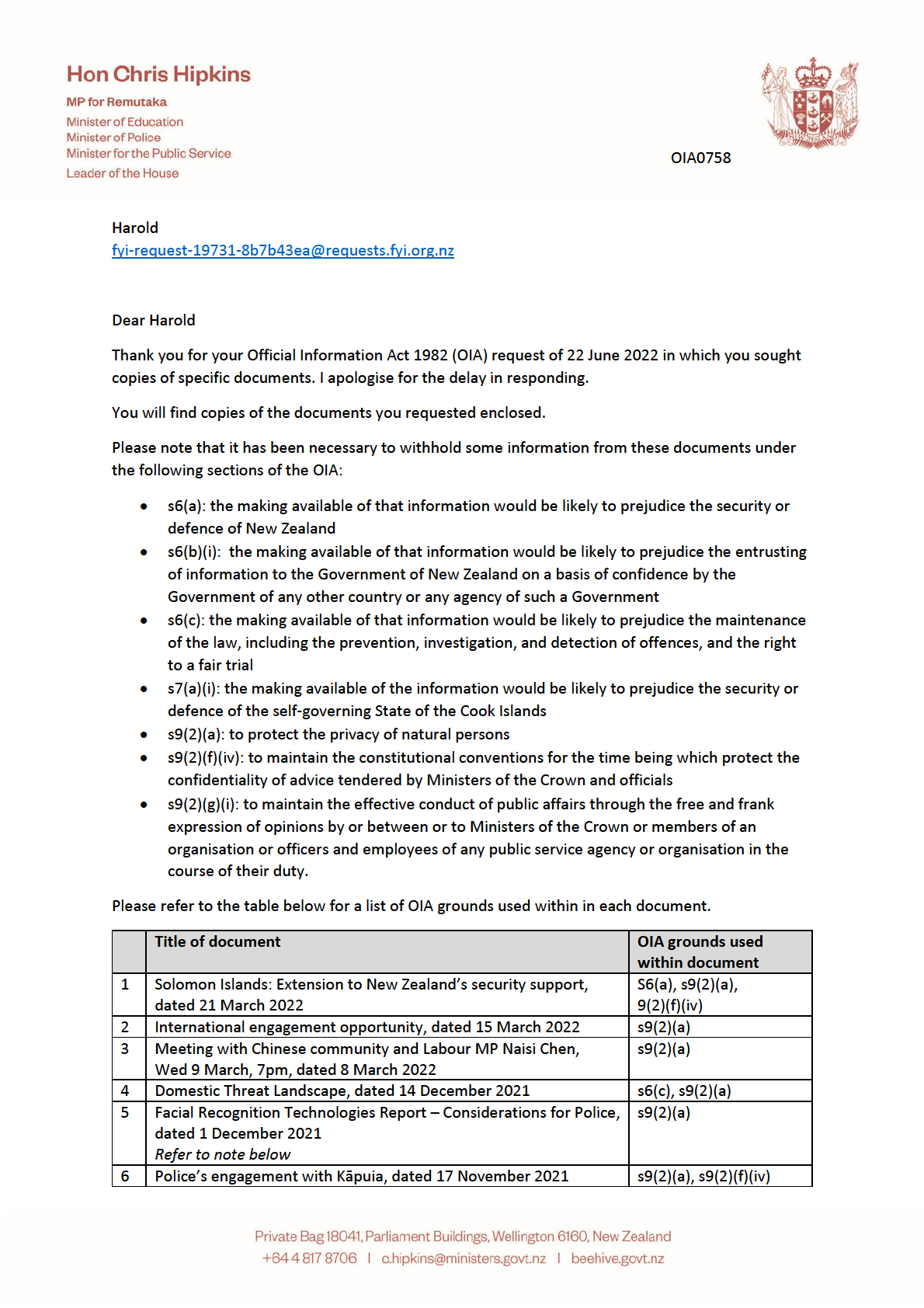

7 He Aranga Ake: Progress Update, dated 29 October 2021
s6(c), s9(2)(a)
8 Deputy Commissioner: Operations - Travel to Europe & the Middle s6(a), s9(2)(a)
East, dated 21 October 2021
9 Updated - Police Response to White Identity Extremism, dated 30
s6(a), s6(c), s9(2)(a),
July 2021
s9(2)(f)(iv)
Talking points originally attached to this briefing are withheld
pursuant to 9(2)(g)(i)
10 New Zealand’s Policing Support to the Cook Islands, dated 16 July
s6(c), s6(b)(i), s9(2)(a),
2021
s9(2)(g)(i)
11 Update on Police use of Drones, dated 6 July 2021
s9(2)(a), 9(2)(f)(iv)
12 Understanding Policing Delivery Independent Panel, dated 27 April s9(2)(a)
2021
Refer to note below
13 Specialist advice on facial recognition technologies, dated 31
s9(2)(a)
March 2021
14 Crowded Places Initiative, dated 29 March 2021
s9(2)(a)
15 New Zealand’s Policing Support to the Cook Islands, dated 26
s6(c), s7(a)(i), s9(2)(a),
March 2021
s9(2)(g)(i)
16 NZ Police Expert Panel on Emergent Technologies, dated 3 March
s9(2)(a)
2021
Refer to note below
I note the two documents referenced in document 5,
Facial Recognition Technologies Report –
Considerations for Police, are publicly available here
: https://www.police.govt.nz/about-
us/programmes-and-initiatives/police-use-emergent-technologies/facial-recognition-technology
The documents original y attached to document 12,
Understanding Policing Delivery Independent
Panel, are publicly available here: https://www.police.govt.nz/about-us/programmes-and-
initiatives/understanding-policing-delivery
The document originally attached to document 16,
NZ Police Expert Panel on Emergent
Technologies, is publicly available here: https://www.police.govt.nz/about-us/programmes-and-
initiatives/police-use-emergent-technologies/advisory-panel-emergent
You have the right to ask the Ombudsman to review my decision if you are not satisfied with my
response to your request.
Yours sincerely
Chris Hipkins
Minister of Police
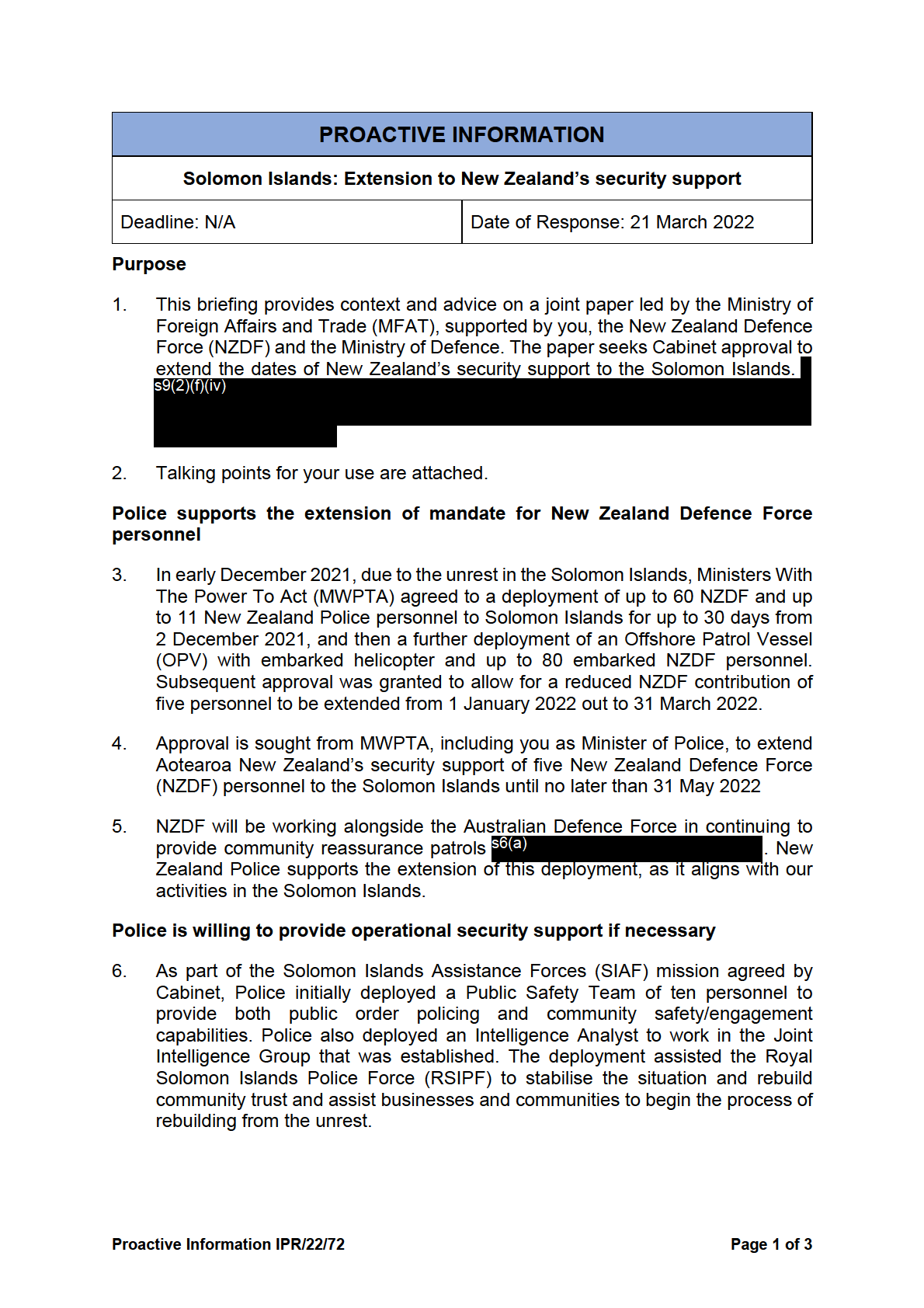
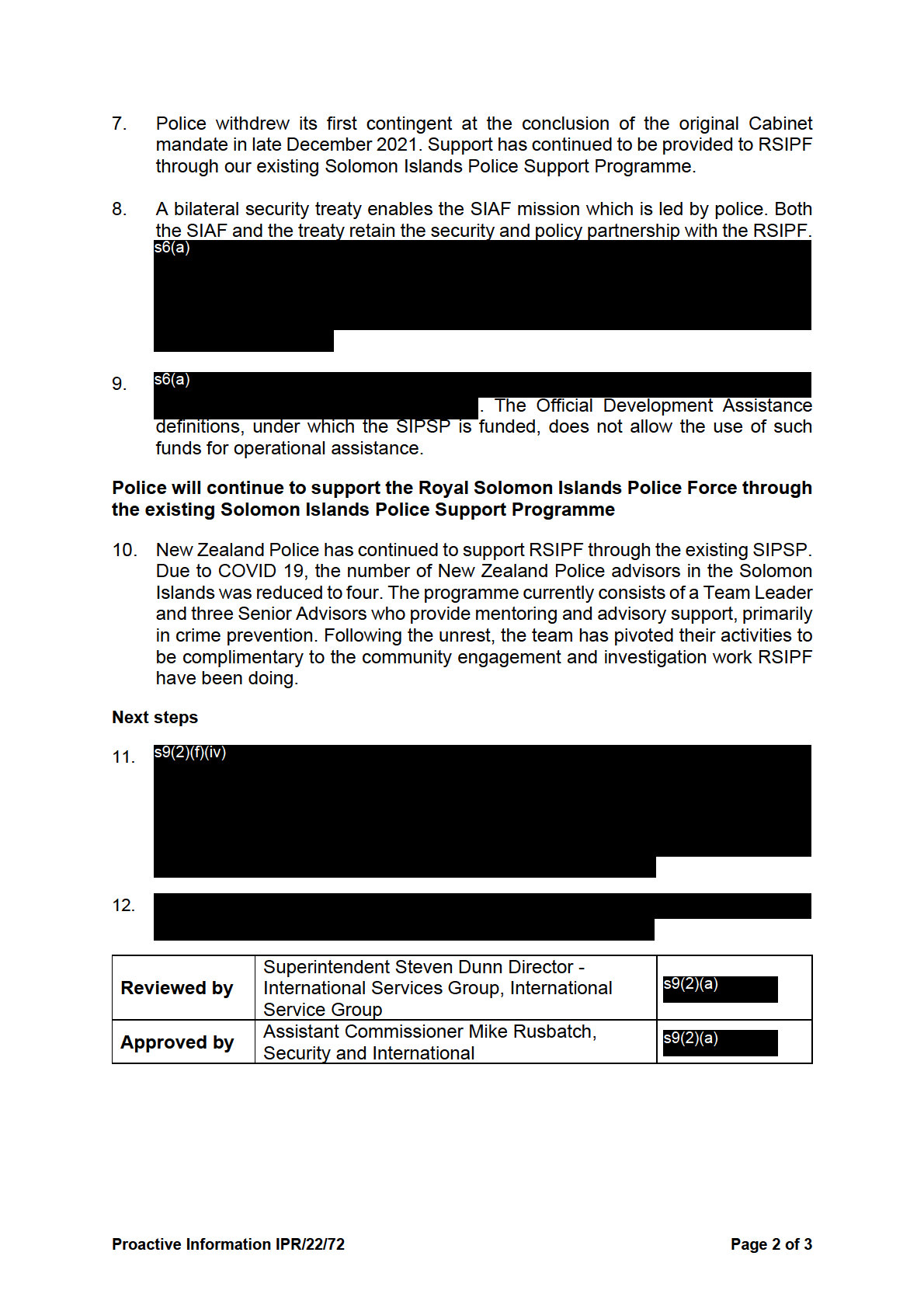
Talking points
s9(2)(f)(iv)
Proactive Information IPR/22/72
Page 3 of 3
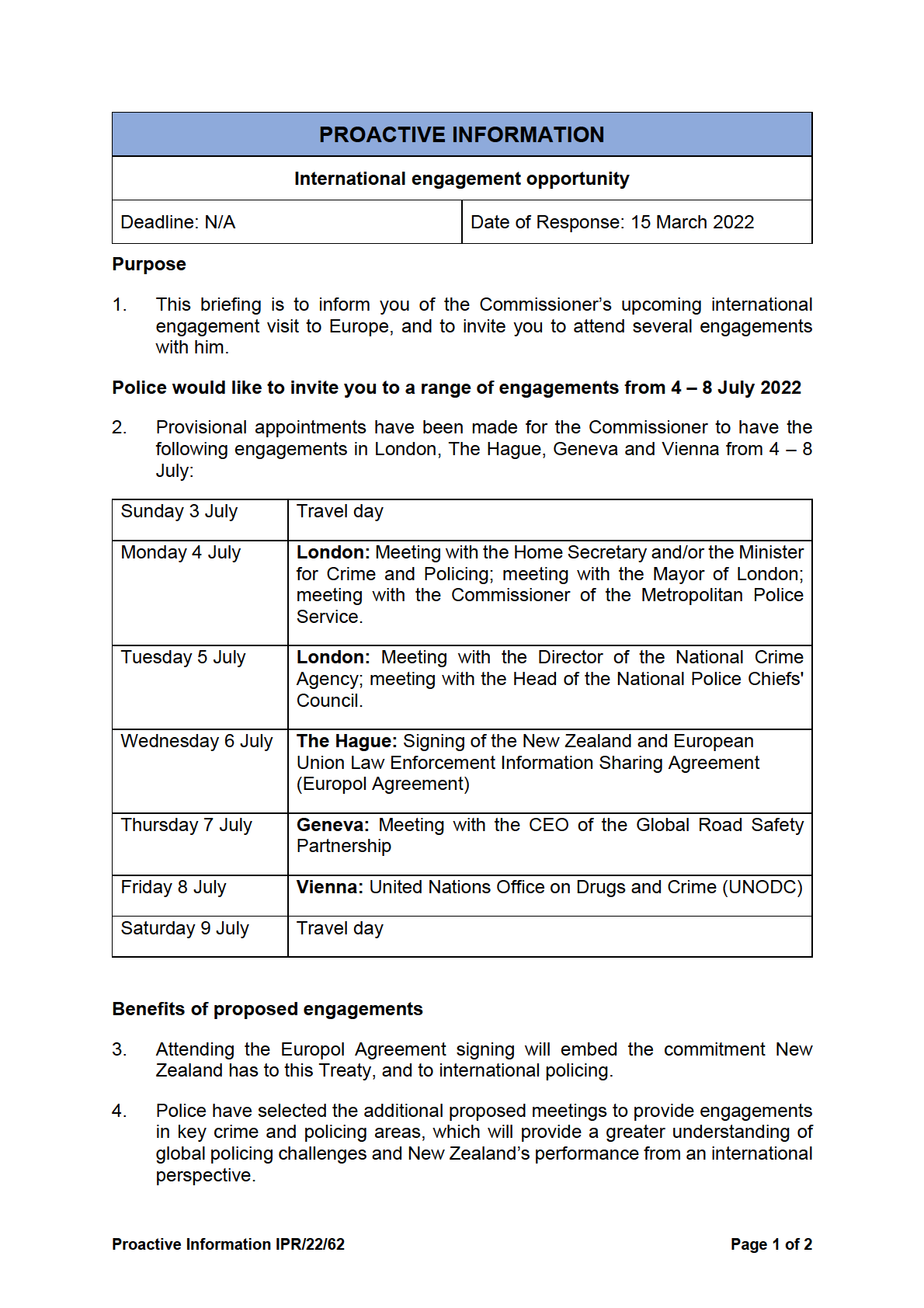
5. Attendance at these international forums wil also provide global attendees with
increased visibility of, and connection to, New Zealand and New Zealand Police.
6. In particular, meetings with the Home Secretary and/or Minister for Crime and
Policing, Mayor of London and UK Police Executives wil provide opportunities to
discuss and exchange views on policing diverse communities, police initiatives,
and approaches to law-and-order challenges experienced by a like-minded
FVEY partner.
7. Additionally, meeting with the CEO of the Global Road Safety Partnership will
support New Zealand’s Road policing aspirations and meetings with UNODC will
provide a global view and greater understanding of tackling drugs and organised
crime from an international perspective.
Additional engagements for the Commissioner
8. The Commissioner has also been invited to participate in the ‘Pearls in Policing
2022 conference - Change as the New Normal: Policing Diverse and Complex
Societies' from 25 to 29 June 2022, and to deliver a keynote address at the
Evidence-Based Policing 2022 International Conference on 11 July 2022. He will
combine attending these events with further proposed visits to the German
Federal Police (Bundeskriminalamt – BKA) and Interpol.
Next steps
9. Should you wish to accept this invitation, we wil provide your office with any
further information required to arrange your international travel.
Reviewed by Chris Page, Senior Liaison Of icer, London
s9(2)(a)
Approved by Mike Rusbatch, Assistant Commissioner,
s9(2)(a)
Security and International
Proactive Information IPR/22/62
Page 2 of 2

Otara (South) to Bucklands Beach (North) and Pakuranga (West) to Maraetai
(East).
4. According to the Cycle 3 of the 2019-20 New Zealand Crime and Victims Survey
(NZCVS), Aucklanders experience above the national average in terms of
offences, with 31.77 percent for all offences (National average 29.26), 14.70
percent for personal offences (National average 14.61), and 20.67 percent for
household offences (National average 18.51).
5. According to the Cycle 3 of the 2019-20 NZCVS, nationally across New Zealand,
the percentage of Chinese people who were victimised once or more was below
the national average, with 23.91 percent for all offences (National average
29.26), 6.18 for personal offences (National average 14.61), and 16.84 percent
for household offences (National average 18.51).
6. The most common offence types in Cycle 3 of the NZCVS were fraud and
deception; harassment and threatening behaviour; and burglary. Together, these
made up more than half of all offences.
7. Police is involved in community-based initiatives to prevent victimisation in the
area, for example with the South Auckland Social Wellbeing Board.
The Chinese community
8. The Chinese population has grown rapidly in recent years. At the 2018 Census,
over a quarter (28 percent or 442,674 people) of Auckland residents identified
with an Asian ethnicity. The largest sub-group were those who identified as
Chinese, followed by those who identified as Indian. This includes people who
have migrated from overseas as well as those born in New Zealand.
9. In 2013, areas in Botany Downs and Dannemora had the highest concentration
of Auckland's Asian population, with approximately 60 to 80 percent of the local
population identifying as Asian. The Howick and Henderson-Massey local boards
were home to the largest numbers of those of Asian ethnicity at the 2018 Census,
with 65,541 and 32,523 residents respectively. Areas in the southeast,
Auckland's city centre, parts of the Auckland isthmus and central parts of the
North Shore also had over half of the local population identifying as Asian.
10. Police aims to ensure Chinese communities feel safe and are safe in New
Zealand.
11. Between February 2021 and January 2022, there were 9,546 reported
victimisations in the Counties Manukau East policing area. Of those victims, nine
percent (850) disclosed their ethnicity as Asian (which includes Chinese, Indian
and other Asian ethnic groups).
12. The top five crime types with Asian victimisation are:
• burglary (169)
• family harm (130)
• fraud offences (110)
Information Request IPR/22/31
Page
2 of
6
• theft from motor vehicles (86)
• stolen motor vehicles (64).
13. The concerns raised in the past by the Chinese community include:
• burglary in the area
• forgery
• assault in a public place.
14. As burglary and forgery are among the top five crime types of Asian victimisation
in Counties Manukau East, these have been the focus of Police prevention
activities for the Chinese community.
15. Assaults in public places occur at a range of locations across Tāmaki Makaurau
and Police recognise the distress such assaults cause not only to those
immediately affected and their whānau, but also to the wider community. Assault
in a public place is often mentioned as a concern by the community, and this may
be due to the extensive social media and media coverage of isolated cases when
they do occur.
16. Despite the high profile of assaults in public places, the most reported assault
cases involving Asian victims are in the family harm context, rather than in a
public setting. Family harm prevention is another focus of Police’s work.
Building staff capability for ethnic diversity
17. Police are ready and capable of responding to the needs and emerging issues
of New Zealand’s increasingly diverse ethnic communities, including the Chinese
community.
18. Police makes sure we have the right people with the right skil s for the job.
Frontline policing is a difficult job and Police recognise it becomes even harder
when communication or cultural setting is a barrier, or where people come from
places with negative experiences of policing.
19. The Counties Manukau East area leadership team focuses on recruiting,
retaining, and developing officers of Chinese ethnicity so our staff can utilise their
language and cultural skil to deliver the service our Chinese community expects.
We currently have 17 Chinese Police officers across different workgroups/ranks,
which allows us to provide adequate services to address the comprehensive
needs of the local Chinese community.
Working with the Chinese community
20. Police have a plan for structured and meaningful engagement with ethnic
communities, including feedback loops to improve our services.
21. Trust and confidence are at the centre of how we engage with the Chinese
community. Preventing victimisation, crimes, and crashes rely on solid and
effective partnerships between Police and communities.
Information Request IPR/22/31
Page
3 of
6
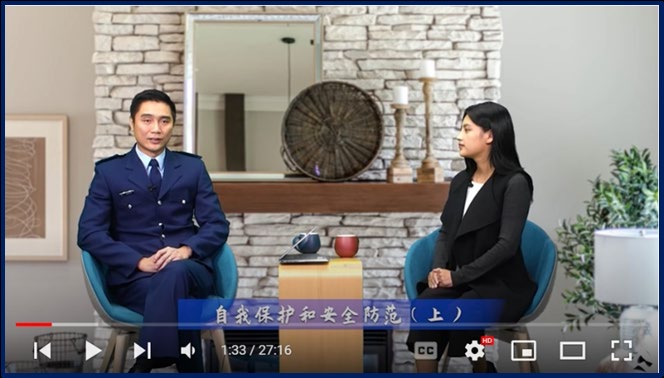
22. Police build and maintain a strong partnership with many Chinese community
organisations. We work closely with the Fo Guang Shan Buddhist Temple, the
Tzu Chi Foundation NZ, The Asian Council on Reducing Crime, A Better Chance
Charitable Trust and Chinese New Settlers Services Trust at Counties Manukau
East.
23. We have hosted a quarterly Asian Leaders Forum at the Ormiston Police Station
for 14 years since 2008. The members consist of community leaders from
different organisations. The purpose is to provide timely area updates to the
community leaders and work with them to develop plans that address crime and
victimisation. It also provides a platform for the Chinese community leaders to
raise any concerns the Chinese community may have.
Prevention first operating strategy
24. Police place prevention at the forefront of our business. Below are some
examples of how we work together with the Chinese community to prevent
victimisation, crimes, and crashes in our area.
• Senior Sergeant Anson Lin was interviewed by Channel 33 TV and
provided prevention advice on burglary, scams, and family harm.
• The Counties Manukau East Youth Aid and Community team have
worked together with the Fo Guang Shan Buddhist temple on its 3G4G
Festival of Cultural Sharing for the last eight years. The purpose of the
program was to promote positive values and connectedness in the
community. In 2021, New Zealand Police supported 38 sessions.
Throughout these, there were 25 schools with over 7,730 students,
teachers, and parents participating. This education program has catered
to primary and secondary school students, aged 5 to 18 from different
cultural backgrounds. It has included engaging role-playing sessions to
encourage students to make the right decisions in life, especially around
misuse of drugs and alcohol, social media safety and personal safety.
Information Request IPR/22/31
Page
4 of
6

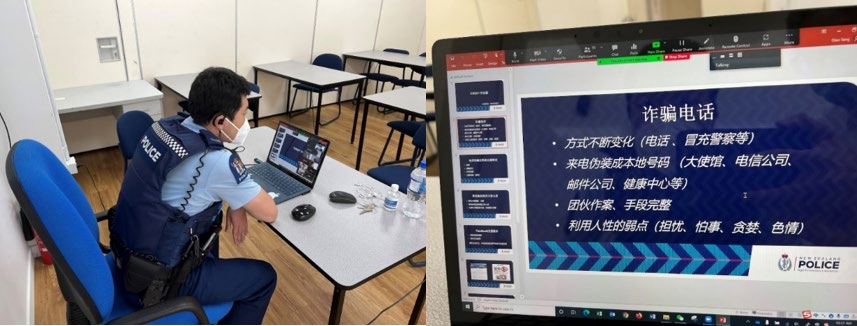

• Due to COVID-19 Alert Level restrictions, Police have been unable to
interact face-to-face with our local Chinese community as much recently.
Instead, Community constable Paul Zhao worked with the Chinese New
Settlers Trust to arrange an online seminar regarding volume crime and
scam prevention. About 150 Chinese community members attended the
seminar online, with very positive results.
• Members of the Otara Neighbourhood Policing Team celebrated the 2021
Lunar New Year at the Fo Guang Temple in Botany. After weeks of
practice, the team performed the first ever Police lion dance, which was
very well received by al those in attendance.
Information Request IPR/22/31
Page
5 of
6
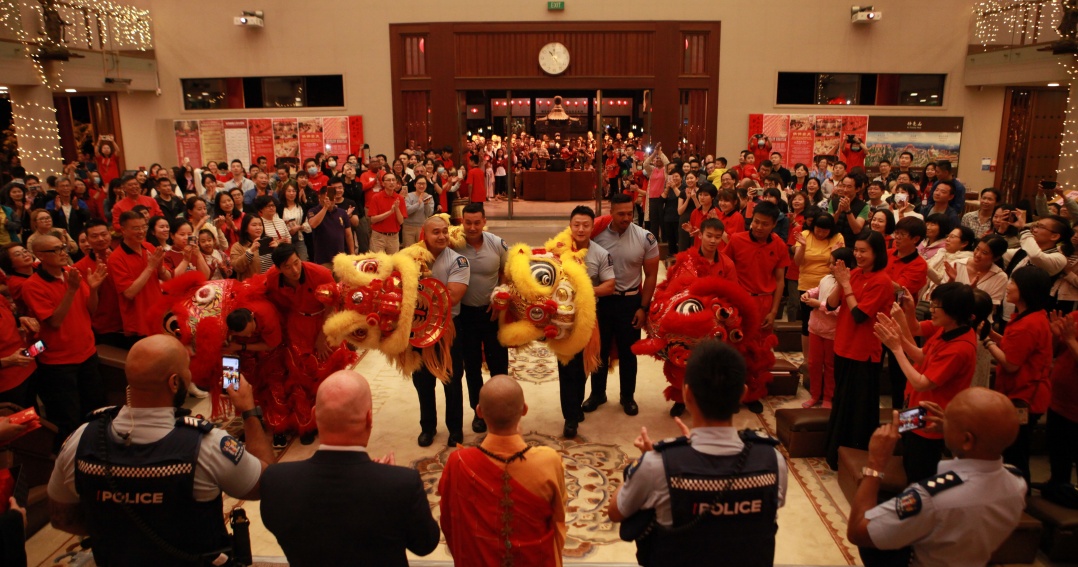 Reviewed by
Reviewed by Inspector Scott Gemmell
s9(2)(a)
Approved by Christopher de Wattignar, Assistant
s9(2)(a)
Commissioner Iwi and Community
Information Request IPR/22/31
Page
6 of
6
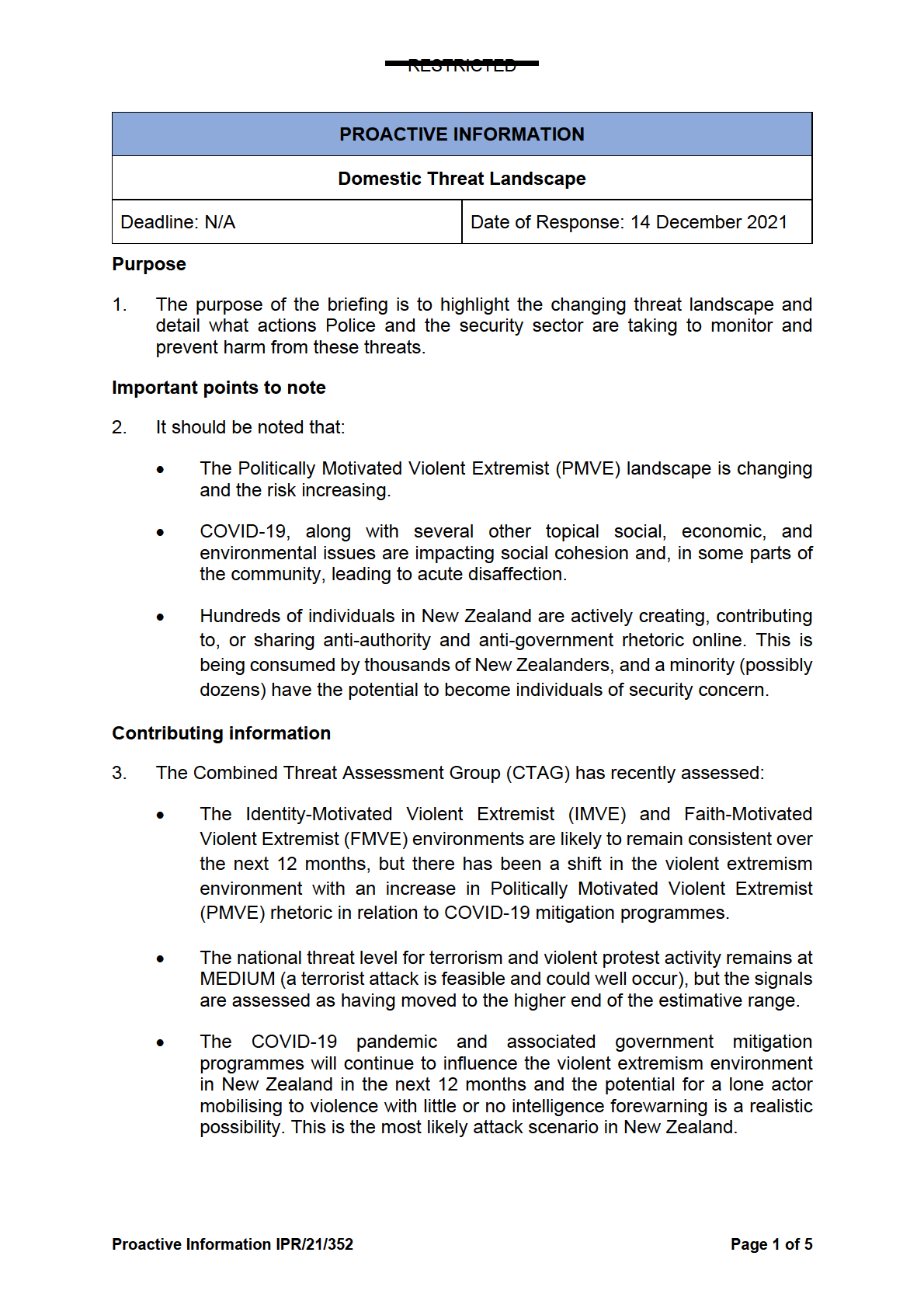
RESTRICTED
4. A level of public discord has been observed following the government’s response
to the Delta strain of COVID-19. The dynamics created by ongoing lockdowns
and pressure to get vaccinated has almost certainly increased people’s anxiety
and frustration. The evident discontent seems, at least in part, a reflection of
growing distrust in authority and the system.
5. The next larger scale anti-COVID measures/freedom and rights protest events
are planned to occur in major centres on Thursday 16 December 2021. Initial
assessments on these protests indicate that these events are likely to attract
protestors with a diverse range of anti-government/anti-authoritarian views
similar to those noted during the 9 November protests. Based on crowd numbers
at previous events in Wellington and Tāmaki Makaurau, early estimates are that
between 3000 and 5000 people may take part in the protests on 16 December.
These protest events are likely to lead to congested inner-city precincts and
short-term disruption of business activity.
6. While the current levels of discord are likely to subside over time, it is possible
that some elements of the discord wil have an enduring longer-term negative
effect on New Zealand society. The conditions created by the discontent have
allowed other divisive narratives and extreme ideologies to enter and become
more mainstream. In the long-term, such narratives and ideas could become
more entrenched across society with disaffected individuals becoming more
susceptible to these harmful ideas and to the mis- and disinformation.
7. The Open Source Intelligence Team (OSINT) recently undertook an investigation
into three prominent New Zealand-focussed anti-vaccination Facebook groups
and found:
•
Approximately 20% of accounts analysed in each group were likely
inauthentic, and that 62% of these appeared to be based overseas.
•
Most articles shared by inauthentic accounts were internationally-focussed
and predominantly shared vaccine and COVID-related misinformation from
the United States.
•
The reason so many inauthentic accounts are operating in New Zealand
anti-vaccination groups is not clear. If they are not there for commercial
gain, a number of risks present themselves including the potential for
inauthentic accounts to inflame emotions among members. This could lead
to potential protest or lawbreaking actions, members taking untested
medications, or other, unforeseen outcomes.
8. The Police Security Intelligence and Threats Group (SITG) has conducted a
preliminary examination of behaviour within the COVID-19 activism environment
and has identified four primary types of participant:
•
‘Citizens’: Everyday people with a legitimate interest in government actions,
decisions, and general management of the pandemic. This entails lawful
dissent and advocacy (i.e. protests) and freedom of expression. Issues
typically centre on reasonable concerns such as the duration and intensity
of lockdowns, or the efficacy and safety of vaccines.
Proactive Information IPR/21/352
Page 2 of 5
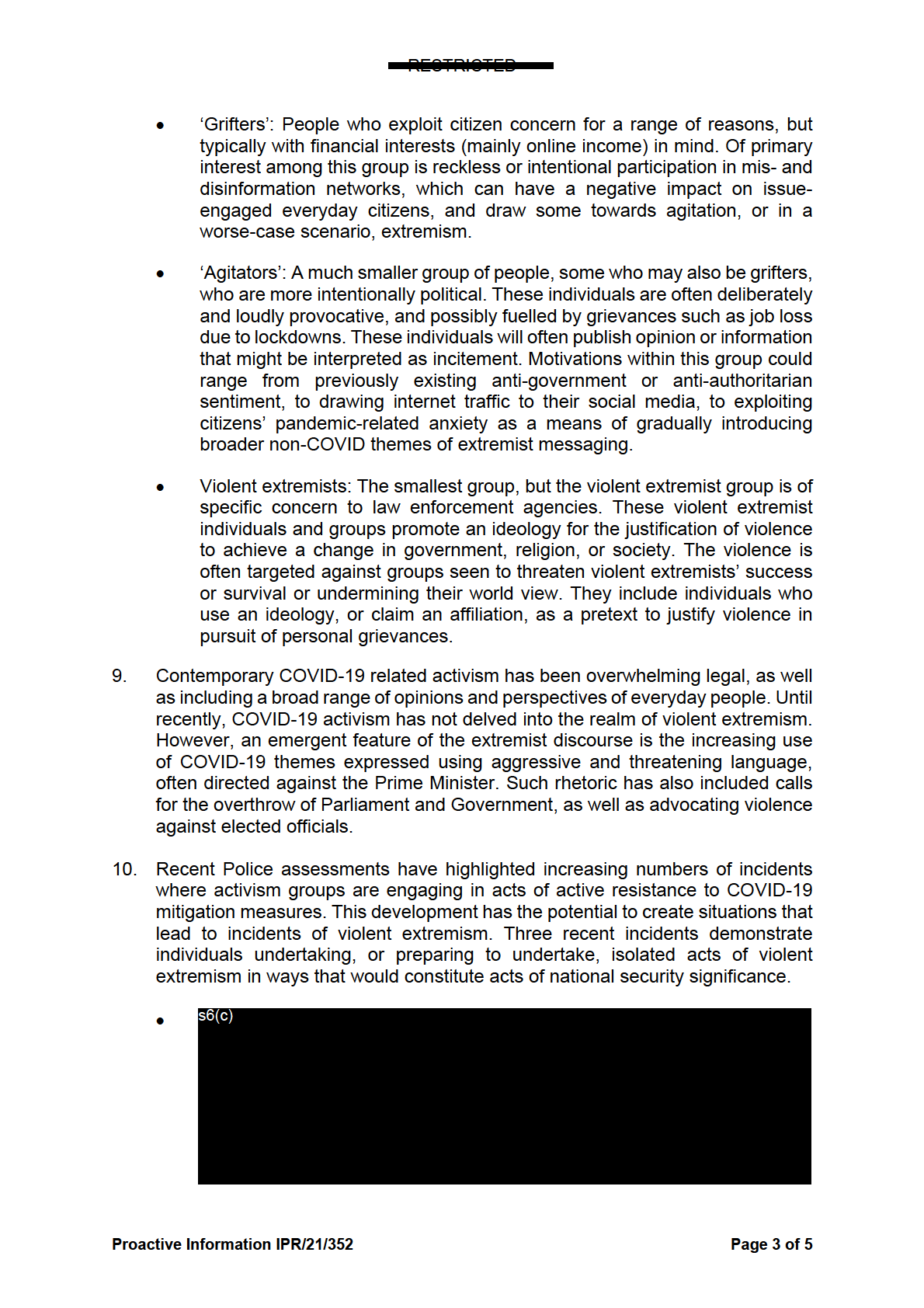
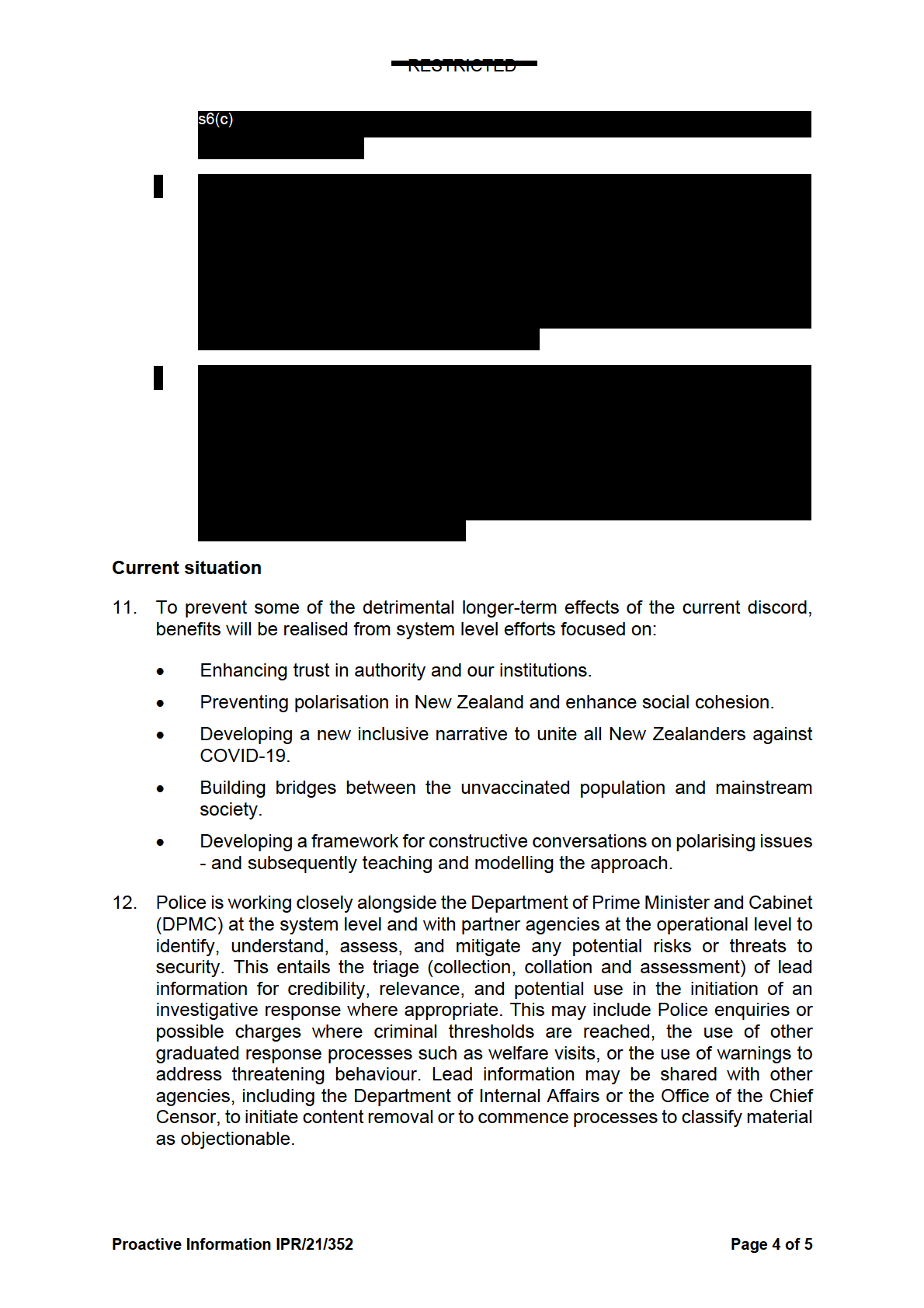
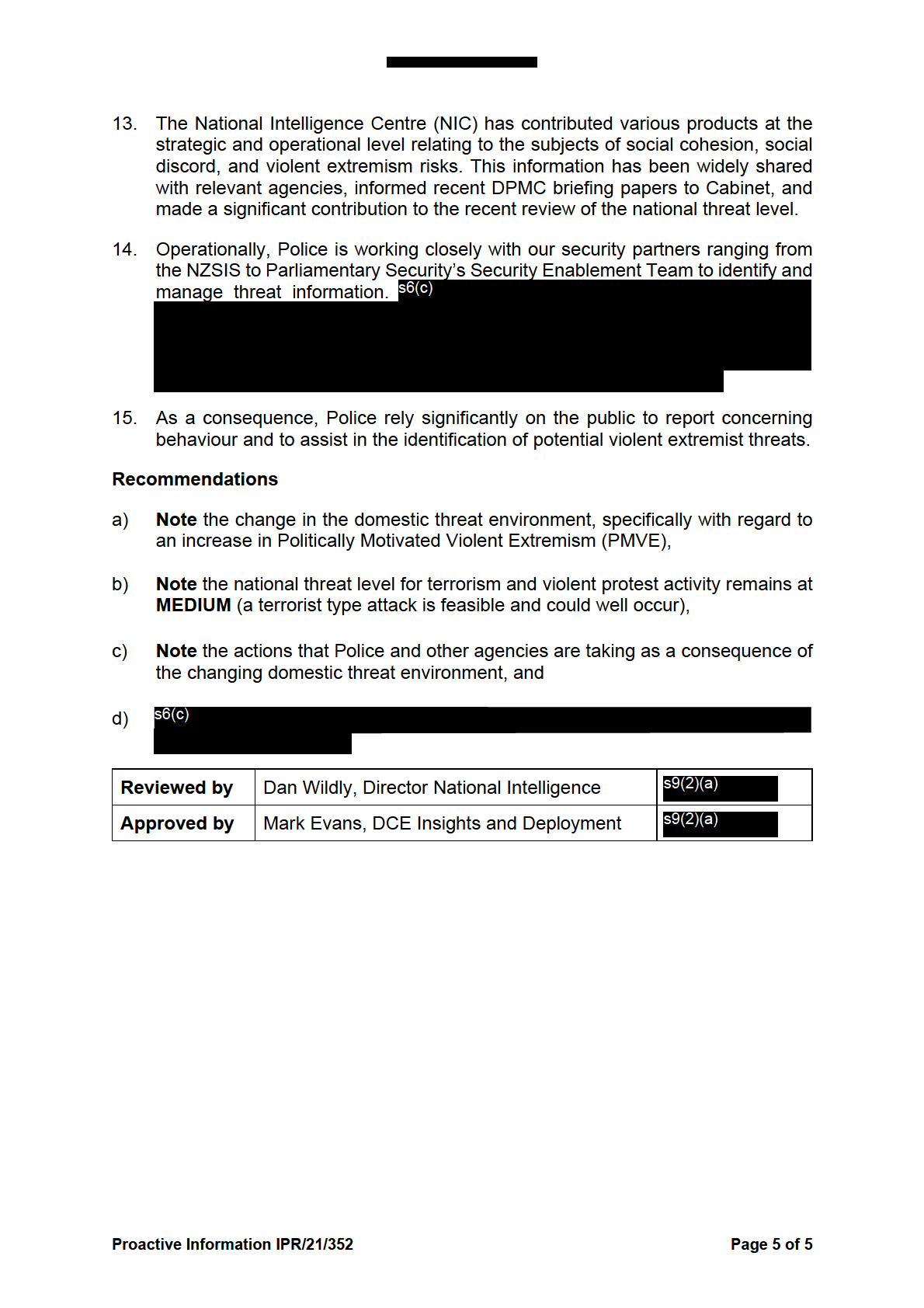

(such as impingement on privacy and inequitable impact on certain groups) may
be perceived to outweigh public benefits and limit our ability to police by consent.
11. Law enforcement agencies internationally have trialled the use of live FRT in a
range of situations. These trials have attracted controversy and highlighted
difficult ethical considerations about when the use of live FRT may be justified
on public safety grounds, and what safeguards ought to be in place.
The Report makes ten recommendations, and Police have developed a high-
level response plan in respect of each of them which Police will work towards
adopting
The Report’s ten recommendations are:
i. Police continues to pause any consideration of live automated FRT
ii. Police reviews collection and retention of facial images and their use by
any FRT systems
iii. Police continues to strengthen processes for ethical commissioning of
technology
iv. Police ensures continuous governance and oversight of deployment of
FRT technologies
v. Police upholds Te Tiriti in partnership with Māori
vi. Police maintains transparency
vii. Police produces a policy statement on use of FRT surveil ance in public
places
viii. Police implements guidelines for access to third party FRT systems
ix. Police embeds a culture of ethical use of data in the organisation
x. Police implements a system for ongoing horizon scanning in respect of
FRT technologies
12. Police accept and wil work towards adopting all ten recommendations. In
particular, Police accepts the recommendation to pause any consideration of
deploying live automated FRT. Police does not currently use live FRT and will
not do so, until the impact of any use from a security, privacy, legal and ethical
perspective is fully understood.
13. Due to the potential for inaccuracies, bias and negative impact on particular
community groups, Police will work to ensure impacts on Māori, children and
young persons are fully considered and mitigated before any use of live FRT is
considered.
14. Police wil develop robust oversight, governance and policy to guide and ensure
the proper use of FRT and the situations where it can be used.
15. Police wil be clear and transparent on how we intend to deliver on each of the
recommendations.
Publicity
16. We expect there to be interest in the Report, and its recommendations, across a
range of government agencies and departments. We plan to share an
Proactive Information IPR/21/336
Page 2 of 3
embargoed early copy of the report with a range of key stakeholders, including
many that were consulted in the drafting of the Report. These include: Office of
the Privacy Commissioner, IPCA, Government Chief Digital Officer and the
Digital Council for Aotearoa New Zealand.
17. A media release wil be issued on Thursday 9 December 2021. Police’s Media
and Communications group wil send your office the release and proposed timing
when it is confirmed. DCE Mark Evans wil be the Police spokesperson.
18. Police has set up a page on our public website to increase awareness and
visibility of our approach to Emergent Technologies.
Reviewed by Carla Gilmore, National Coordination Lead,
s9(2)(a)
Emergent Technologies
Approved by Mark Evans, DCE: Insights and Deployment
s9(2)(a)
Proactive Information IPR/21/336
Page 3 of 3
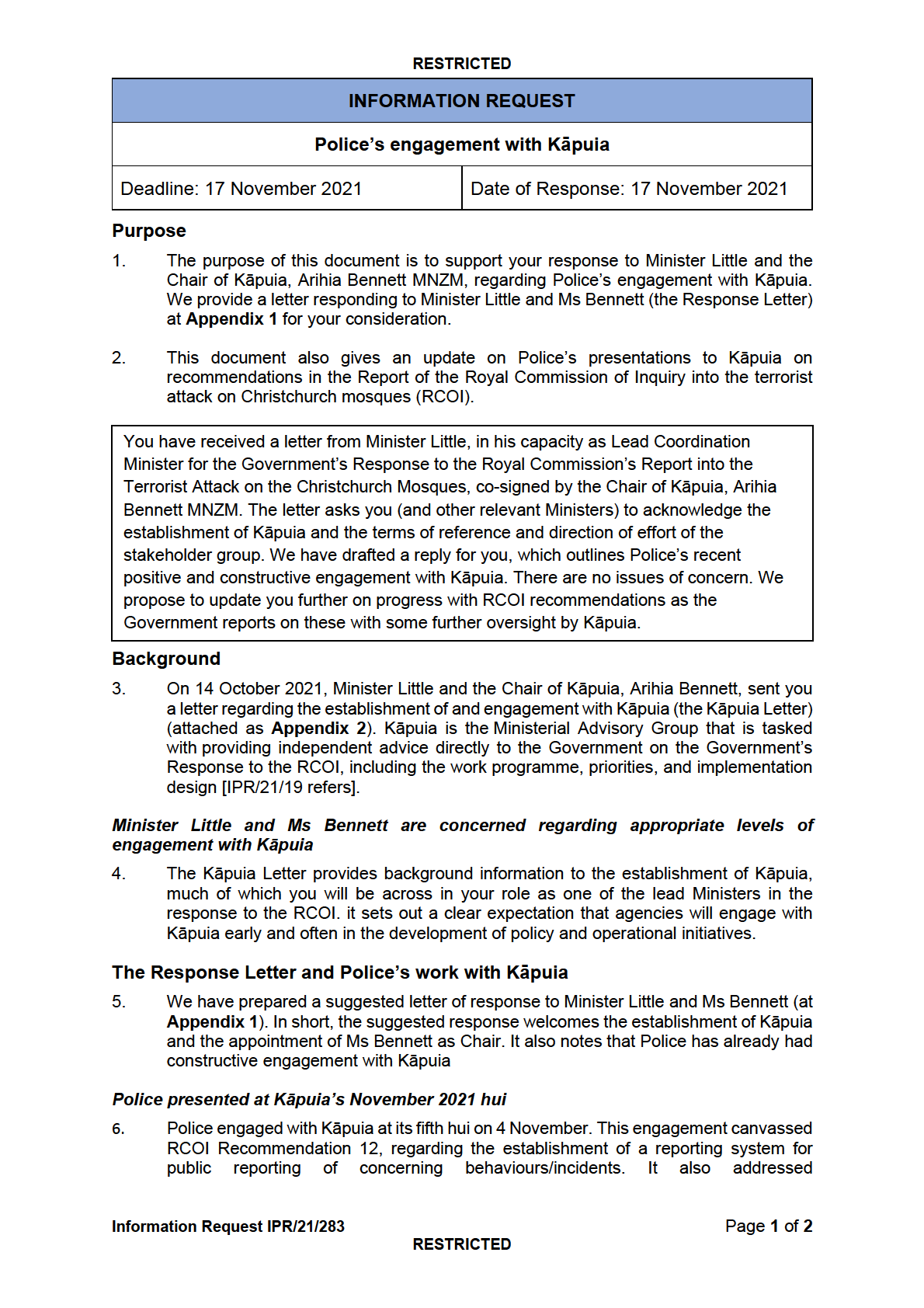
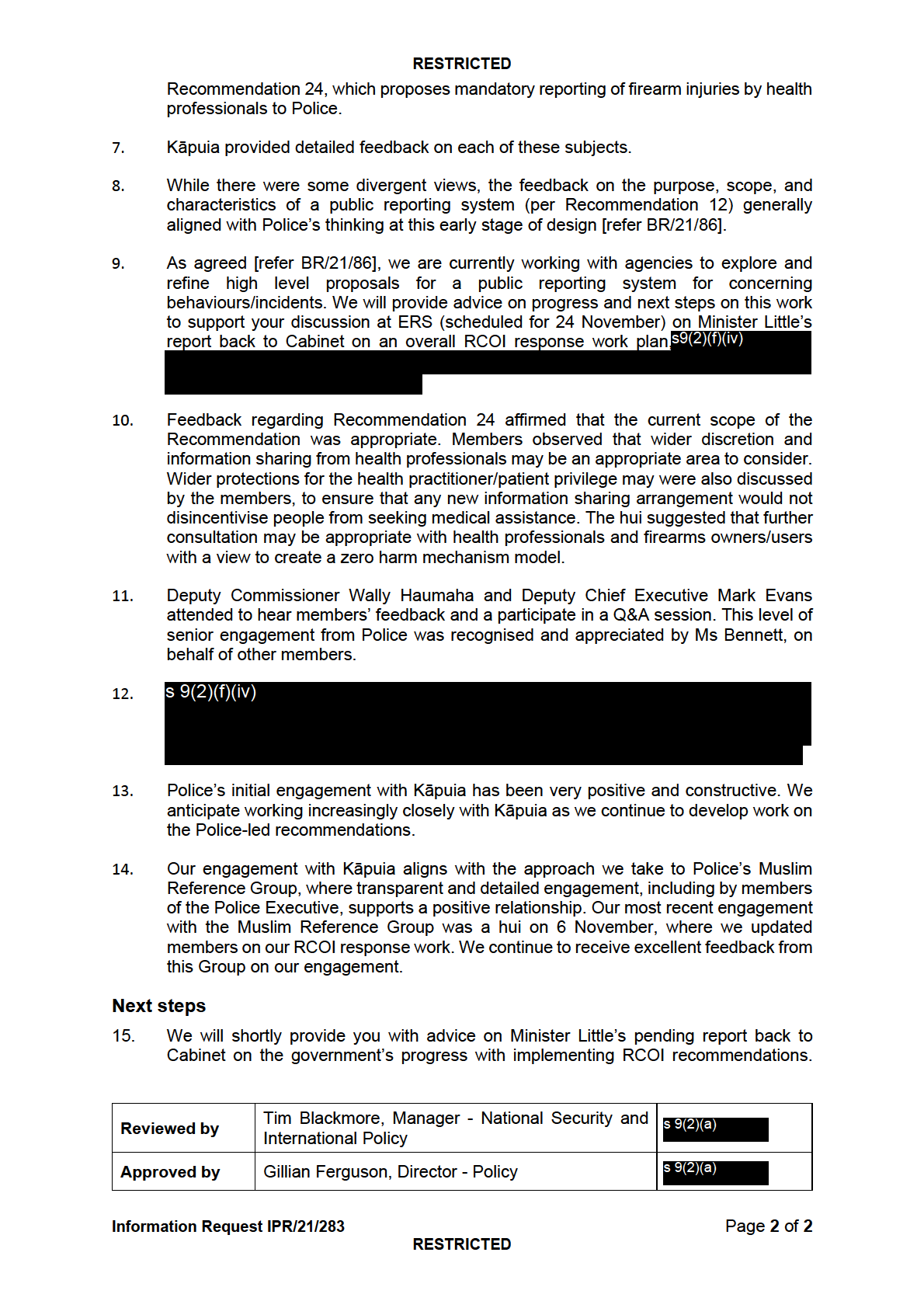


Ref:
Hon Andrew Little
Lead Coordination Minister for the Government’s Response to the Royal Commission’s Report into
the Terrorist Attack on the Christchurch Mosques
Ms Arihia Bennett MNZM
Chair, Kāpuia
Tēnā kōrua Minister and Ms Bennett
Thank you for your letter of 14 October 2021, outlining the establishment of Kāpuia – the new
Ministerial Advisory Group on the Government’s Response to the Royal Commission of Inquiry into
the terrorist attack on Christchurch mosques.
As Minister of Police I welcome the establishment of Kāpuia, as an important partnership supporting
the Government’s response to the Royal Commission Report, and congratulate you, Ms Bennett on
your appointment as Chair.
I am pleased to note that Police has already engaged with Kāpuia, having presented directly on
police-led Royal Commission of Inquiry recommendations. I understand that the Commissioner of
Police is planning to meet with you, Ms Bennett, shortly as well.
Police welcomed the opportunity to present to Kāpuia at its recent hui, and received helpful
feedback on the desired characteristics of a public reporting system concept that will help in our
thinking about the scope and design of a new reporting service. Police and Kāpuia have also
addressed the scope and details of introducing a reporting system for firearms incidents by health
professionals to Police, for which further consultation with health professionals and firearms users is
likely.
I look forward to working with you both more generally on how Recommendation 12 could work in
practice. This can be informed by further reflections on Kāpuia’s advice. I anticipate discussing how a
refined Police-led proposal may be best reflected and incorporated in your forthcoming review of
RCOI resourcing priorities.
I look forward to continuing to engage with you and the advisory group on this important mahi.
Nāku noa, nā
Yours sincerely
Hon Poto Williams
Minister of Police


Lead Coordination Minister for the Government’s Response to the Royal Commission’s Report into the Terrorist Attack on the Christchurch Mosques
Rt Hon Jacinda Ardern, Prime Minister and Minister for National Security and Intelligence
Hon Grant Robertson, Minister of Finance
Hon Chris Hipkins, Minister for the Public Service and Minister of Education
Hon Carmel Sepuloni, Minister for Social Development and Employment
Hon Nanaia Mahuta, Minister of Foreign Affairs
Hon Poto Williams, Minister of Police
Hon Kris Faafoi, Minister of Justice and Minister of Immigration
Hon Jan Tinetti, Minister of Internal Affairs
Hon Meka Whaitiri, Minister of Customs
Hon Priyanca Radhakrishnan, Minister for Diversity, Inclusion and Ethnic Communities, and
Associate Minister for Social Development and Employment
14 October 2021
E Ngā Rangatira Ma
Re: Kāpuia, the Ministerial Advisory Group on the Government’s Response to the
Royal Commission of Inquiry into the terrorist attack on Christchurch mosques
As you are aware, the report of the Royal Commission of Inquiry into the terrorist attack on
Christchurch mosques (RCOI) recommended the establishment of an Implementation
Oversight Advisory Group to ensure that communities, civil society, local government and the
private sector are involved in the Government’s response to the report. It highlighted the need
to involve communities in the design of the Government’s implementation plan to effectively
deliver social change and rebuild trust and confidence in public sector agencies.
The further terror attack in Auckland on 3 September has sadly only reinforced the importance
of progressing the changes that were recommended by the RCOI.
In March 2020 Cabinet agreed that the Implementation Oversight Advisory Group
recommended by the RCOI would function as a Ministerial Advisory Group, and the Cabinet
Appointments and Honours committee has agreed to appoint 32 members to the group.
The group has taken the name Kāpuia and (as we discussed at the last Responsible Ministers
meeting) it has already started to provide independent advice to the Government - on its
response to the RCOI and ways we can make New Zealand a safer, more inclusive country
for everyone.
Kāpuia’s diverse membership reflects its role in ensuring that communities are at the centre
of the Government’s response to the RCOI. Members include affected whanau, survivors and
witnesses, people from civil society and diverse communities (such as iwi, Pacifica, rural,
disabilities, Rainbow, ethnic and faith communities, and more) plus experience of local
government and the private sector. They bring valuable perspectives for the RCOI response
from across New Zealand.


As Ministers with responsibility for implementing the recommendations and intent of the RCOI
report, we welcome your agencies’ engagement with Kāpuia.
Kāpuia’s role, as set out in its terms of reference, is to advise on strengths, opportunities,
weaknesses and gaps across the Government’s response. This includes providing advice on
the work programme and its priorities, implementation of initiatives and the ongoing progress
of the response.
This means that Kāpuia should be engaged by agencies early in the development of policy
and operational initiatives – including in defining problems and opportunities, how and when
consultation should be undertaken, and on proposals for change. Kāpuia itself is not
responsible for the development of policy or implementation options and cannot direct
agencies, but it can provide feedback to agencies and advice to Ministers.
While engagement with Kāpuia is not intended to replace broader community engagement, it
also has a key role in providing advice and guidance to agencies on how to structure
engagement so that it is accessible and supports the development of policy that meets
communities’ needs.
Once Kāpuia’s advice to the Lead Coordination Minister has been considered, it will be
released publicly. However, its members are bound by a code of conduct that protects the
confidentiality of official advice. We are confident that the members of Kāpuia take this
responsibility seriously.
An early focus for Kāpuia is to develop its work plan and priorities. Kāpuia has held three hui,
with a fourth planned for 13 October 2021. Kāpuia is already working with some agencies, and
is currently considering the draft work programme for the government response to the RCOI
ahead of Cabinet considering a final work programme later this year that will be based on this
feedback.
Kāpuia wil be able to operate most effectively if it has oversight of the work underway across
government and both the secretariat and the group are able to have an ongoing dialogue with
Ministers and agencies about the progress of the response. We would strongly encourage
Ministers and agencies involved in the response to share project and engagement plans with
Kāpuia in advance of engaging on specific proposals.
Kāpuia is supported by a secretariat within the Department of Prime Minister and Cabinet.
Project leads can contact Kāpuia directly at kāpuia@dpmc.govt.nz. This letter has been
copied to the Chief Executives of the agencies involved in the RCOI response for cascading
as appropriate.
We both look forward to continuing to engage with you and your agencies on this important
work.
Nāku noa, nā
Hon Andrew Little
Arihia Bennett MNZM
Lead Coordination Minister for the Government’s
Chair, Kāpuia
Response to the Royal Commission’s Report into
the Terrorist Attack on the Christchurch Mosques
CC: Brook Barrington, Secretary of the Department of the Prime Minister and Cabinet;
Caralee McLiesh, Secretary to the Treasury; Peter Hughes, Public Service Commissioner;
Iona Holsted, Secretary for Education; Debbie Power, Secretary for Social Development;
Carolyn Tremain, Secretary for Business, Innovation and Employment; Chris Seed,
Secretary for Foreign Affairs and Trade; Andrew Coster, Commissioner of Police; Andrew
Kibblewhite, Secretary for Justice; Paul James, Secretary for Internal Affairs; Christine
Stevenson, Comptroller of Customs; Mervin Singham, Chief Executive, Ministry for Ethnic
Communities
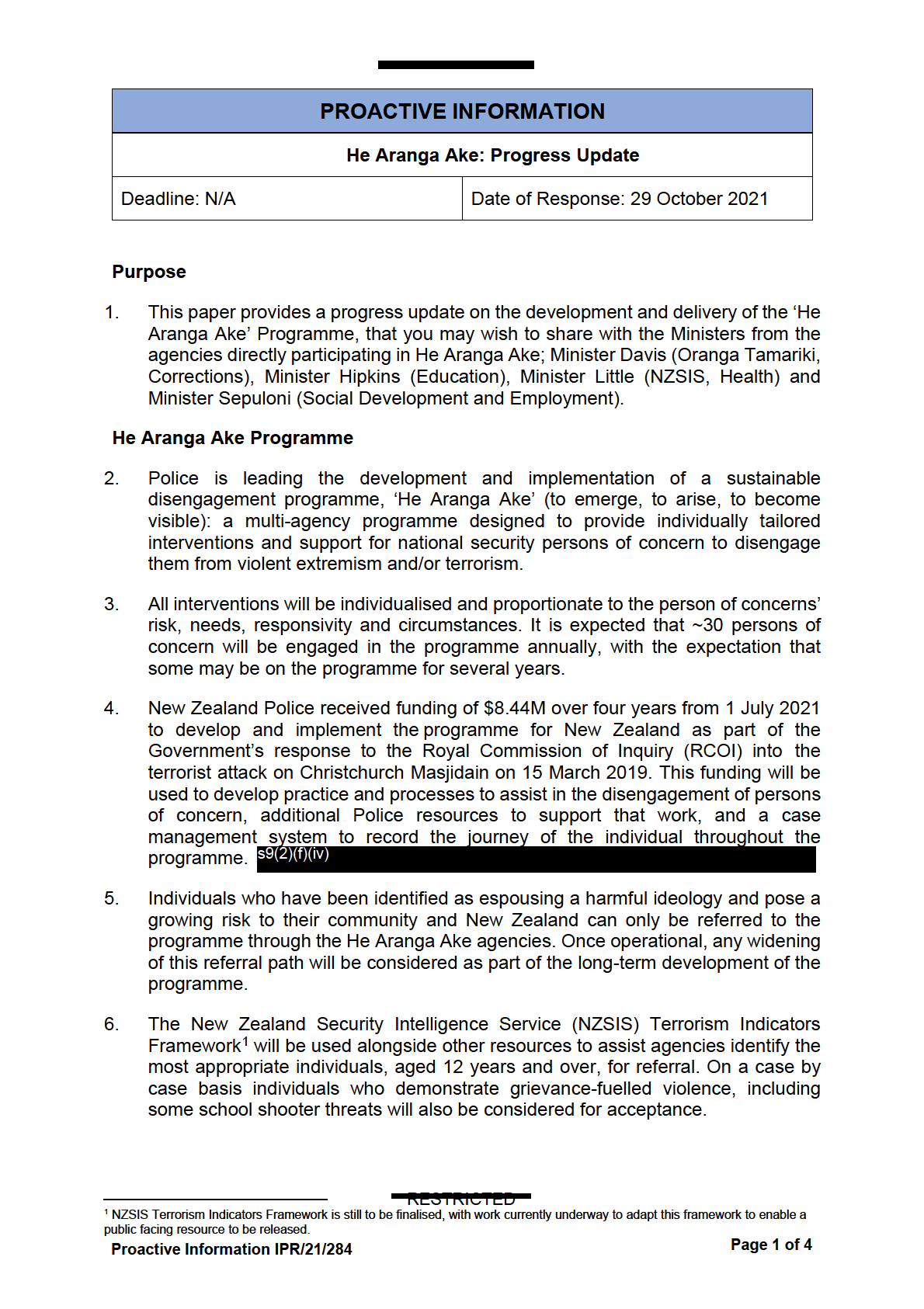
RESTRICTED
A project team has been established to develop and deliver the programme
7. This project, led by Police, has been established to formalise the processes,
procedures and information management around identification and support of
national security persons of concern through to their disengagement. The project
utilises subject matter experts from each of the participating agencies to contribute
to the outcomes.
8. A multi-agency Governance Group, comprising Police, the Ministries of Education,
Social Development, Health, the Department of Corrections, Oranga Tamariki, and
the New Zealand Security Intelligence Service has been established and a terms
of reference agreed.
9. Project reporting on He Aranga Ake is included in reporting to RCOI Responsible
Ministers through the Police RCOI programme. He Aranga Ake is a deliverable of
the New Zealand’s Countering Terrorism and Violent Extremism National Strategy
work programme.
10. The project wil build on learnings from the predecessor programme established in
2015, including retaining the ability to engage non-government service providers
and individuals, as appropriate, to provide the best intervention for the person of
concern. He Aranga Ake wil have an active role in promoting the growth of new
services nationally, particularly those which can address the role of technology in
our person of concern’s radicalisation or extremist journey.
The project is on track for He Aranga Ake to become operational in 2022
11. The project team has high-level requirements confirmed. Initial discussions for
the Case Management System have commenced. A Business Case has been
developed and is in the approval process. The project team’s current work is
focused on:
•
continuing to develop and document He Aranga Ake Programme
requirements, processes, and practices.
•
communicating to each agency what they need to implement to effectively
identify, assess, and refer individuals to the programme, as well as to lead
interventions for individuals on the programme. These changes are being
led by each agency as these are outside the scope of the project.
•
continue engagement with the preferred vendor for the case management
system.
•
implementing a New Zealand designed assessment framework with
measurable outcomes.
•
developing a comprehensive privacy impact assessment.
Proactive Information IPR/21/284
RESTRICTED
Page 2 of 4
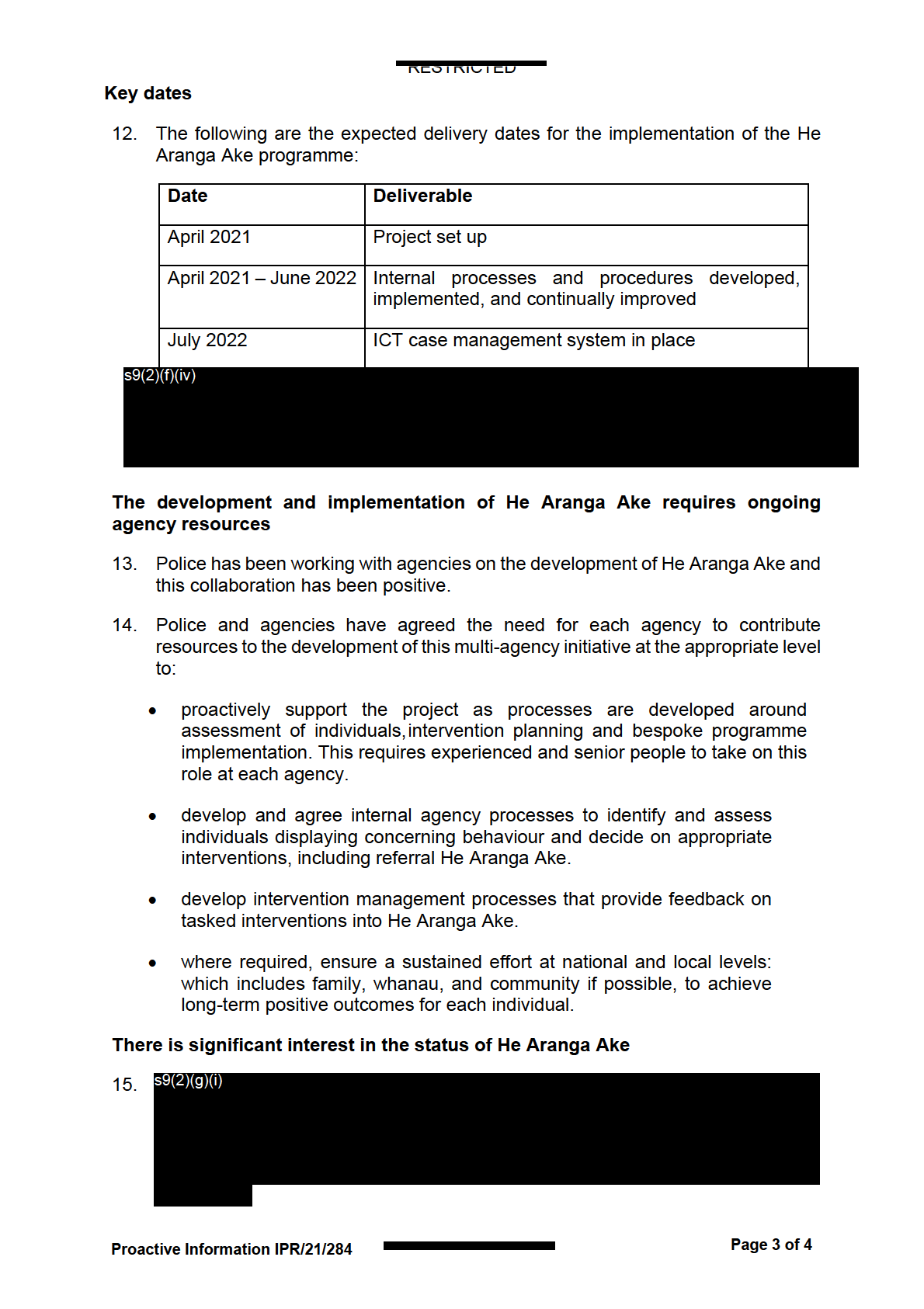
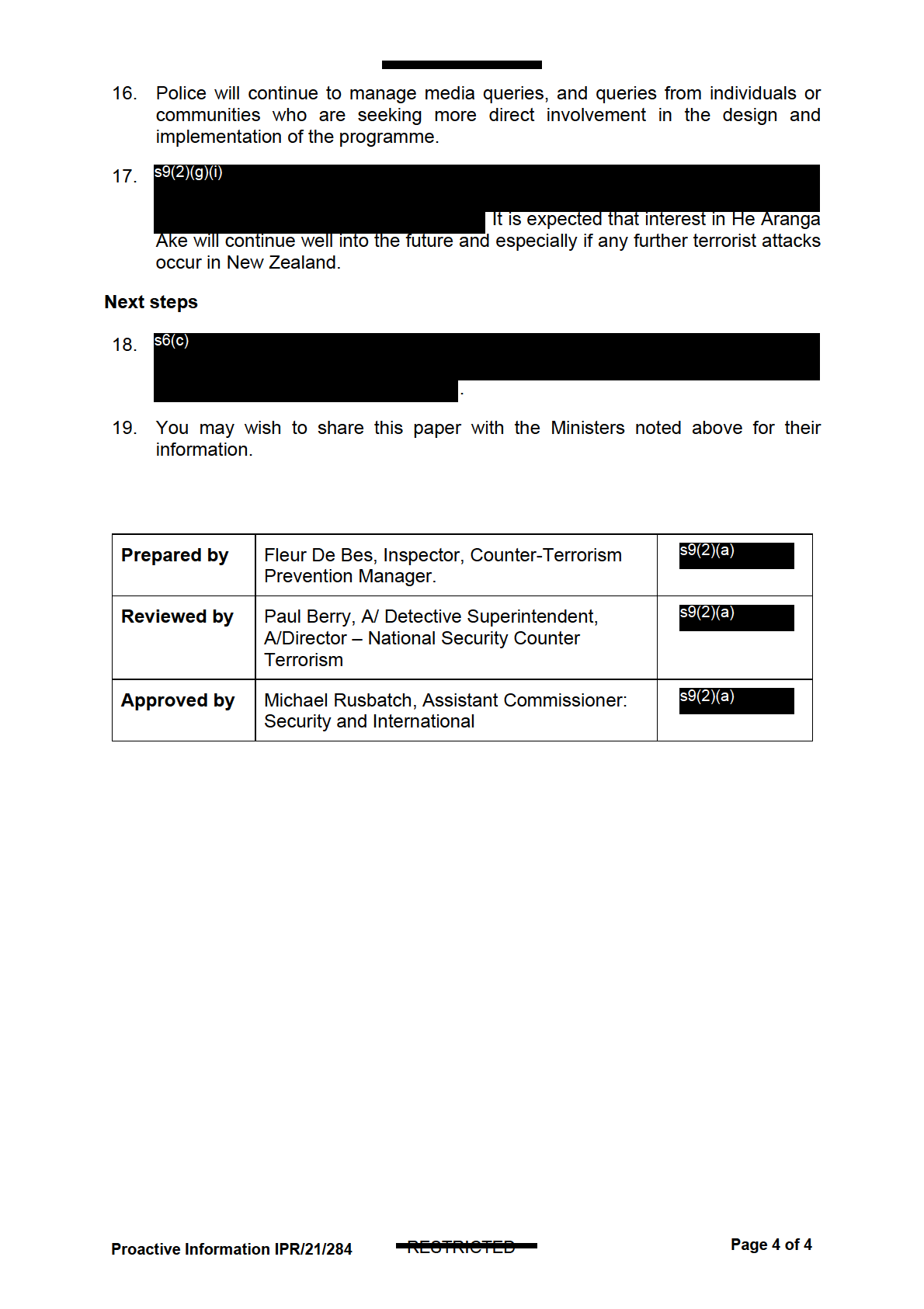
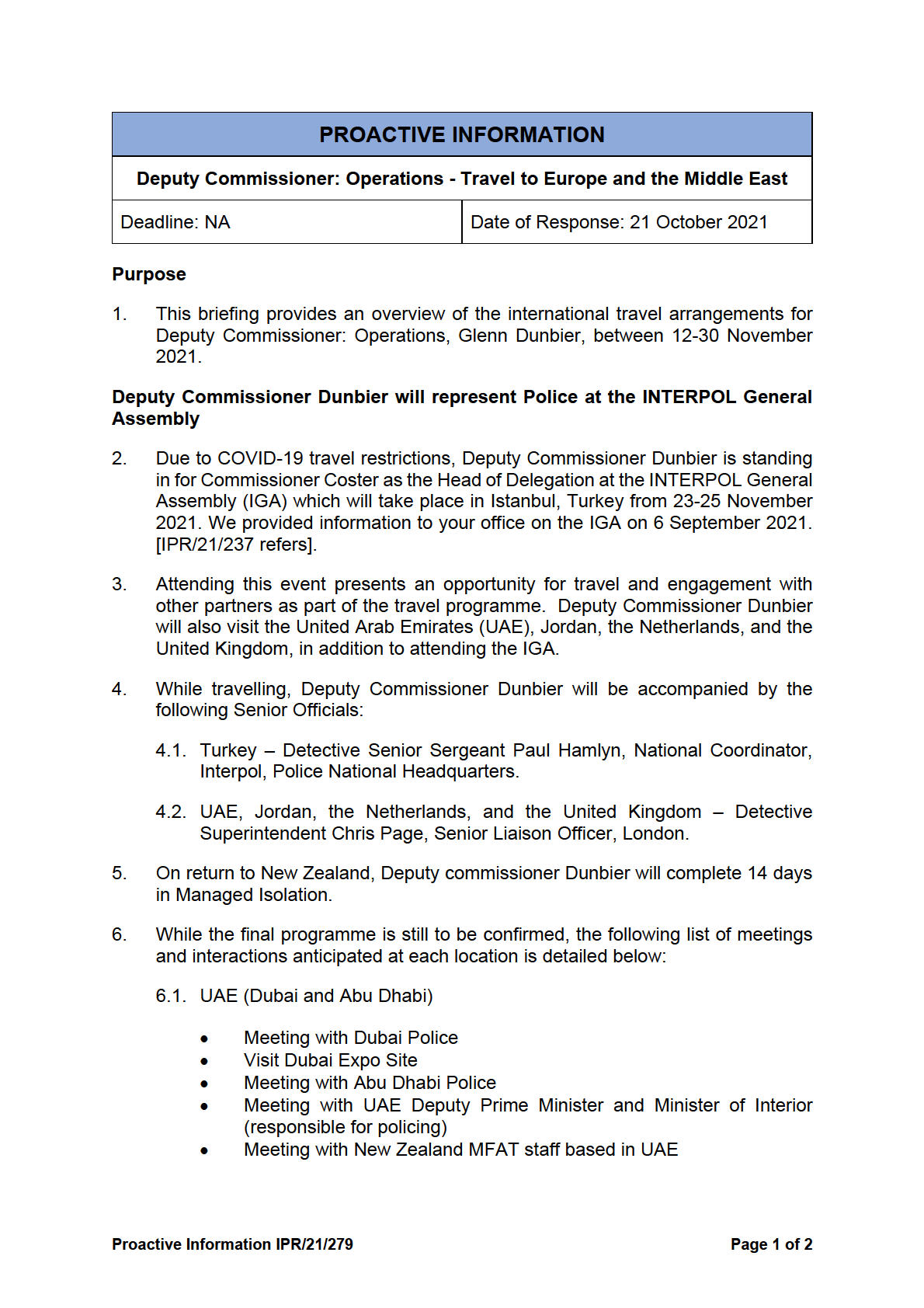
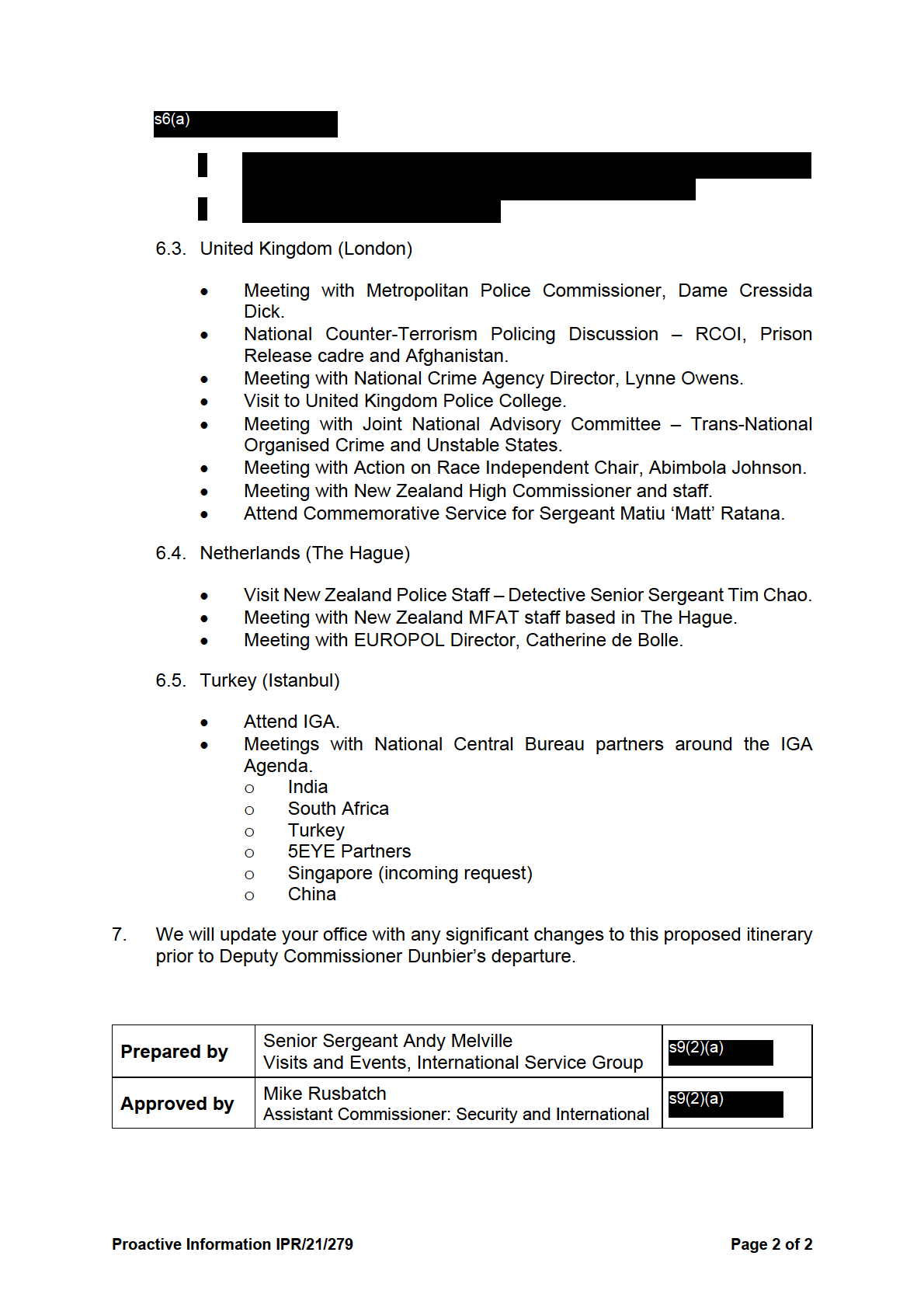
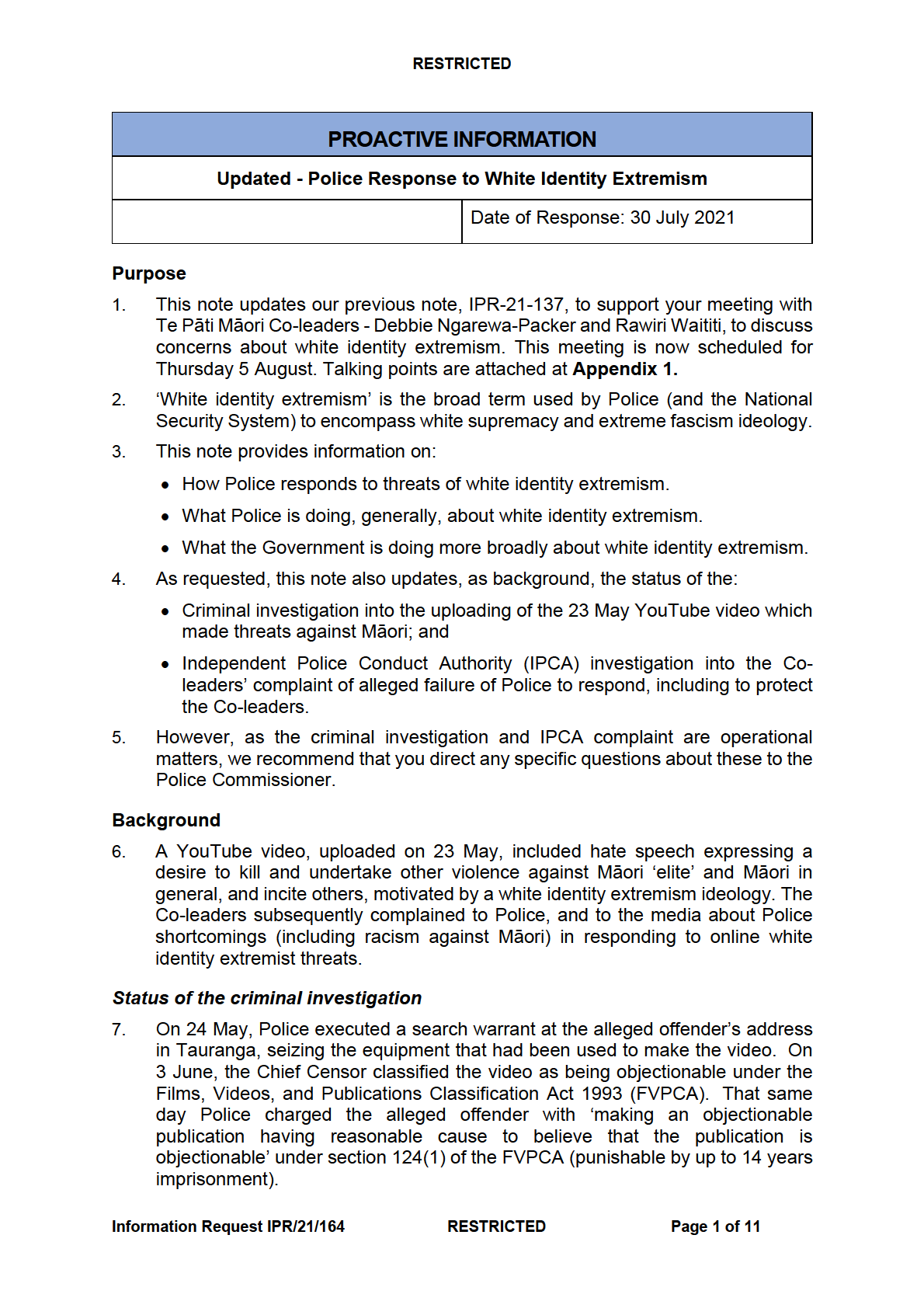
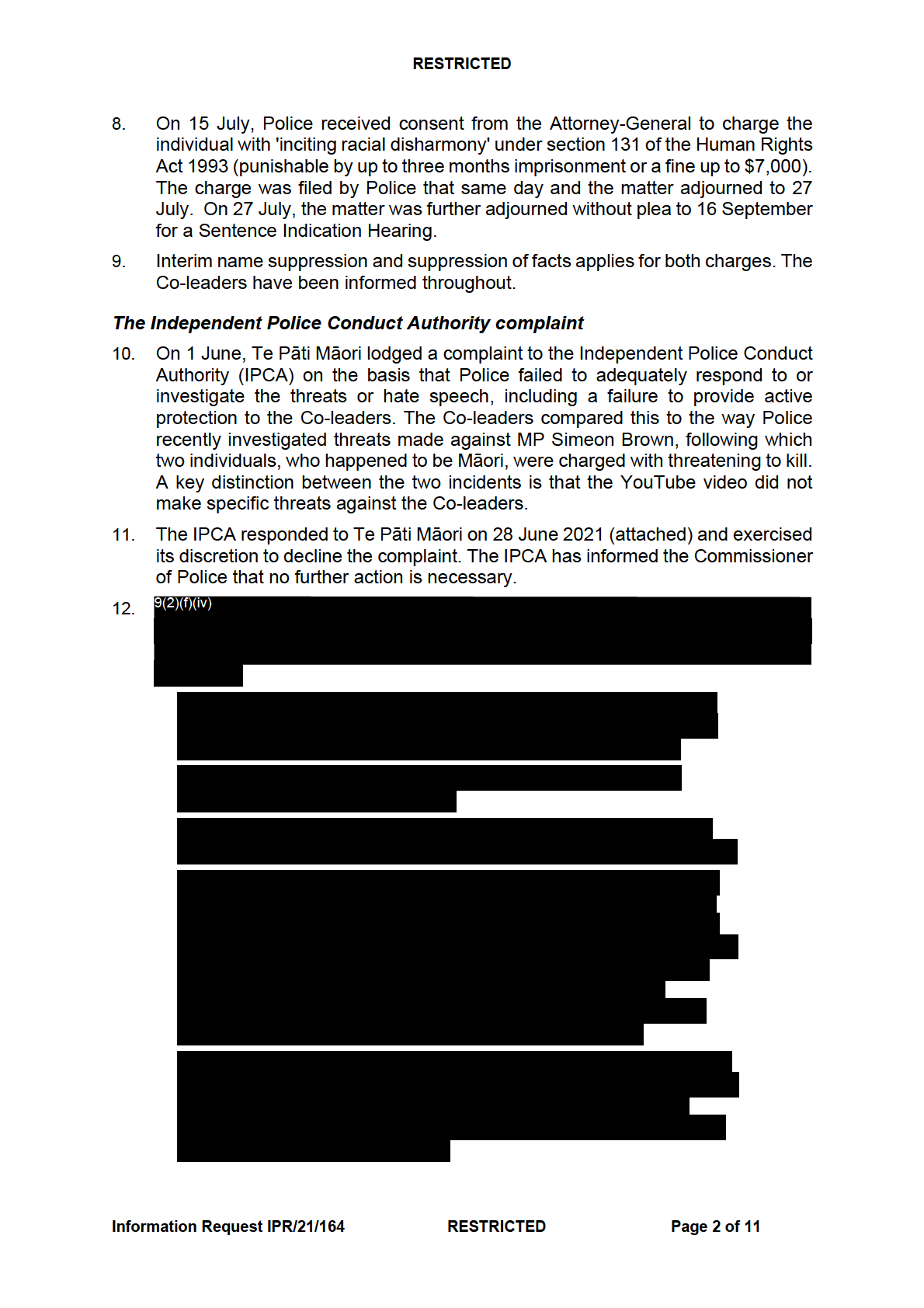
RESTRICTED
Co-leaders’ proposal for a joint task force
13. Te Pāti Māori has also called for a joint task force between the Police and the
New Zealand Security Intelligence Service (NZSIS) to investigate anti-Māori hate
speech and targeting of Māori by white identity extremist groups. We understand
that the Co-leaders have met with Hon Andrew Little, Minister Responsible for
NZSIS and Rebecca Kitteridge, Director-General of Security, to discuss this
issue.
14. Police does not support the proposal for a joint task force. Currently hate speech,
without the accompanying element of incitement, is unlikely to meet criminal
prosecution thresholds. As noted below, Police already has relationships and
processes in place to work with the intelligence agencies to identify concerning
online extremist content and respond to credible leads of potential criminal
violence.
How Police responds to threats of white identity extremism
Police responds to credible leads of threats or suspected potential violence
15. Police does not differentiate between threats on the basis of the ideological
position of the person suspected of making the threat. Al threats are investigated
on the basis of the potential offences committed and, in particular, whether there
appears to be a credible threat of violence or the potential for violence is
suspected. Where this is the case, investigations are prioritised in order to better
understand and mitigate potential danger to the community.
16. Other protective actions may also be necessary, depending on how rapidly the
investigation can progress. For example, in the case of the threatening
communications targeting the University of Otago graduation ceremonies earlier
in 2021, Police worked with the university, local authority, and community around
security until the suspect responsible for the threats was identified and
apprehended.
17. The nature of the investigation wil depend on the circumstances, such as how
the threat was communicated, its nature, and whether the individual can be
readily identified. It is not always clear what ideology an individual may hold, or
whether the ideology they appear to hold is genuine. Police regularly investigates
cases which involve hoaxes or individuals where the matter is more complex than
what may first appear. In this instance, the person suspected of being
responsible for the video was able to be rapidly identified due to the nature of
their video and information held on them from prior interactions with Police. In
other instances, such as anonymous threats on message boards, other
investigation techniques are needed to establish the location and identity of the
person thought to be responsible.
18. As noted above, Police does not formally differentiate between ideologies when
carrying out these investigations. However, references to issues such as the
Christchurch attacks or attacker, or potentially credible commentary linking the
threat with other violent extremist incidents, individuals, movements or groups
would be taken into account when assessing the likely seriousness of, and
therefore priority given to, the matter.
Information Request IPR/21/164
RESTRICTED
Page 3 of 11

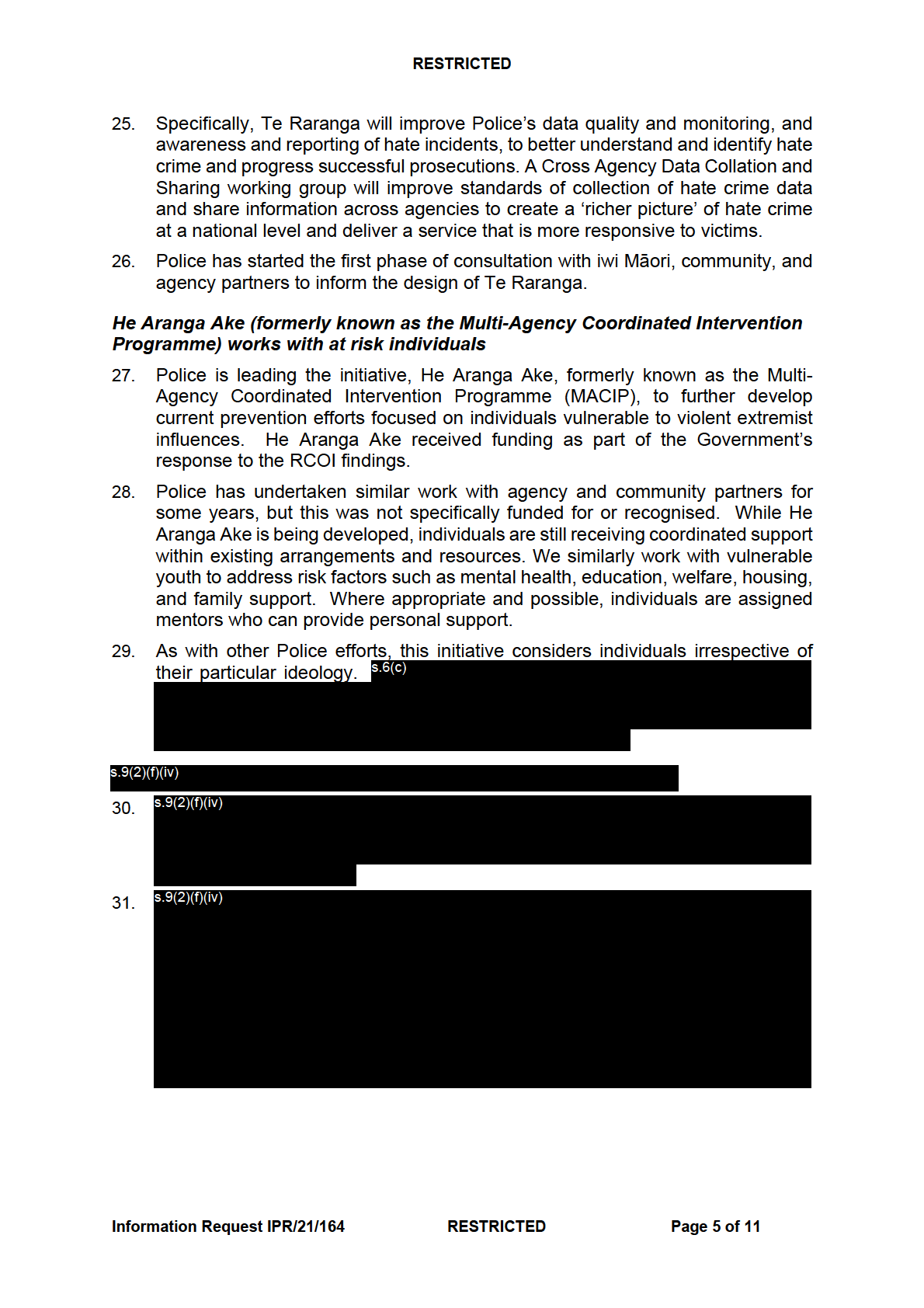
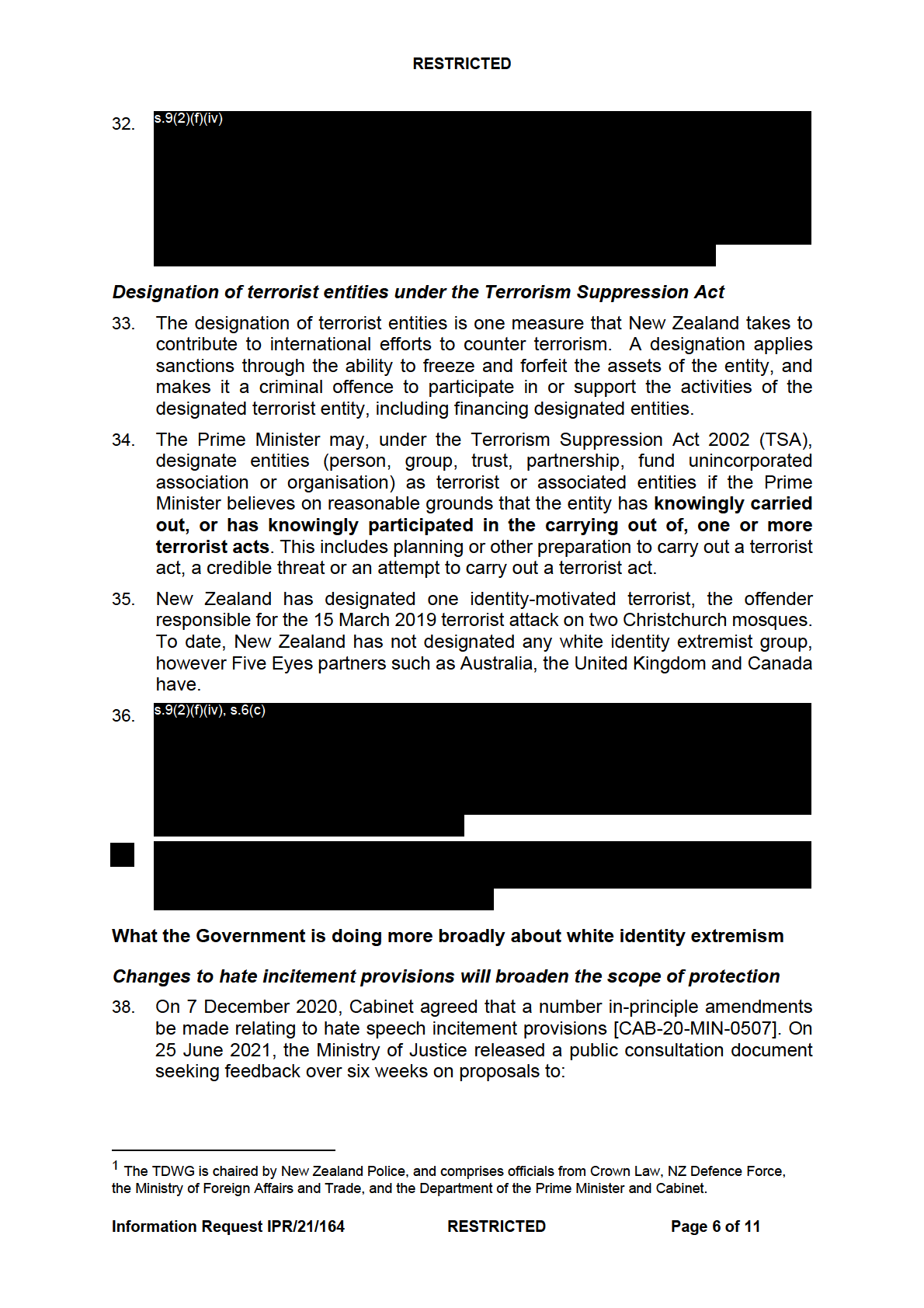
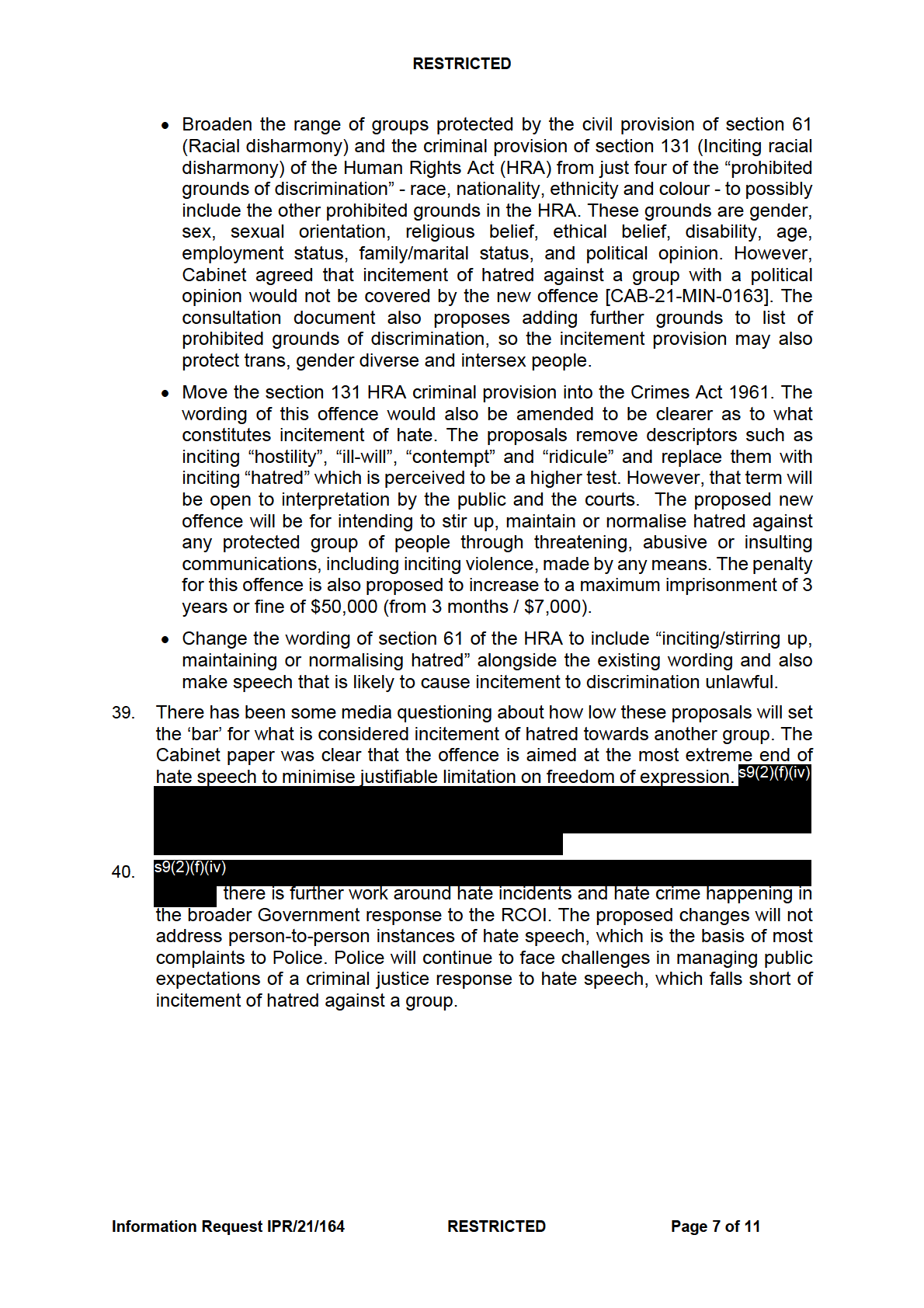
RESTRICTED
Proposed amendments to the Films, Videos, and Publications Classification
Act to provide for faster decisions about classifying objectionable material
41. The FVPCA enables the Chief Censor to classify material as “objectionable” if it
meets certain criteria under section 3 of the FVPCA.2 Currently, the Chief Censor
must give a comprehensive written decision before material can be deemed
objectionable. During this time, public harm can stil occur, and the objectionable
content may be disseminated further. This occurred during the 15 March 2019
Christchurch terror attacks where the livestream of the attack was not classified
until 18 March 2019, and the terrorist’s manifesto was not classified until 22
March 2019.
42. The Governance and Administration Select Committee is currently considering
amendments to the FVPCA, which would enable the Chief Censor to rapidly
make an interim classification decision, pending a final written decision, which
would have the same effect as a written decision for up to 20 days. This allows
for an initial, fast response to instances of clear objectionable content. The
amendments also propose to create take-down notices which would require the
removal of objectionable online content. The Government is also undertaking a
broad review of the media content regulatory system.
Christchurch call
43. The Christchurch Call, led by the Prime Minister, is a commitment by
Governments and technology companies to eliminate terrorist and violent
extremist content online. The Call outlines collective, voluntary commitments
from Governments and online service providers intended to address the issue of
terrorist and violent extremist content online and to prevent the abuse of the
internet as occurred in and after the Christchurch attacks.
First contact
Gil ian Ferguson, Director, Policy
s.9(2)(a)
Second contact Glenn Dunbier, Deputy Commissioner,
s.9(2)(a)
Operations
2 A publication is objectionable if it describes, depicts, expresses, or otherwise deals with matters such as sex,
horror, crime, cruelty, or violence in such a manner that that availability of the publication is likely to injurious to
the public good…promotes or supports…acts of torture or the infliction of extreme cruelty…degrades or
dehumanises or demeans any person, and/or promotes or encourages criminal acts or acts of terrorism.
Information Request IPR/21/164
RESTRICTED
Page 8 of 11
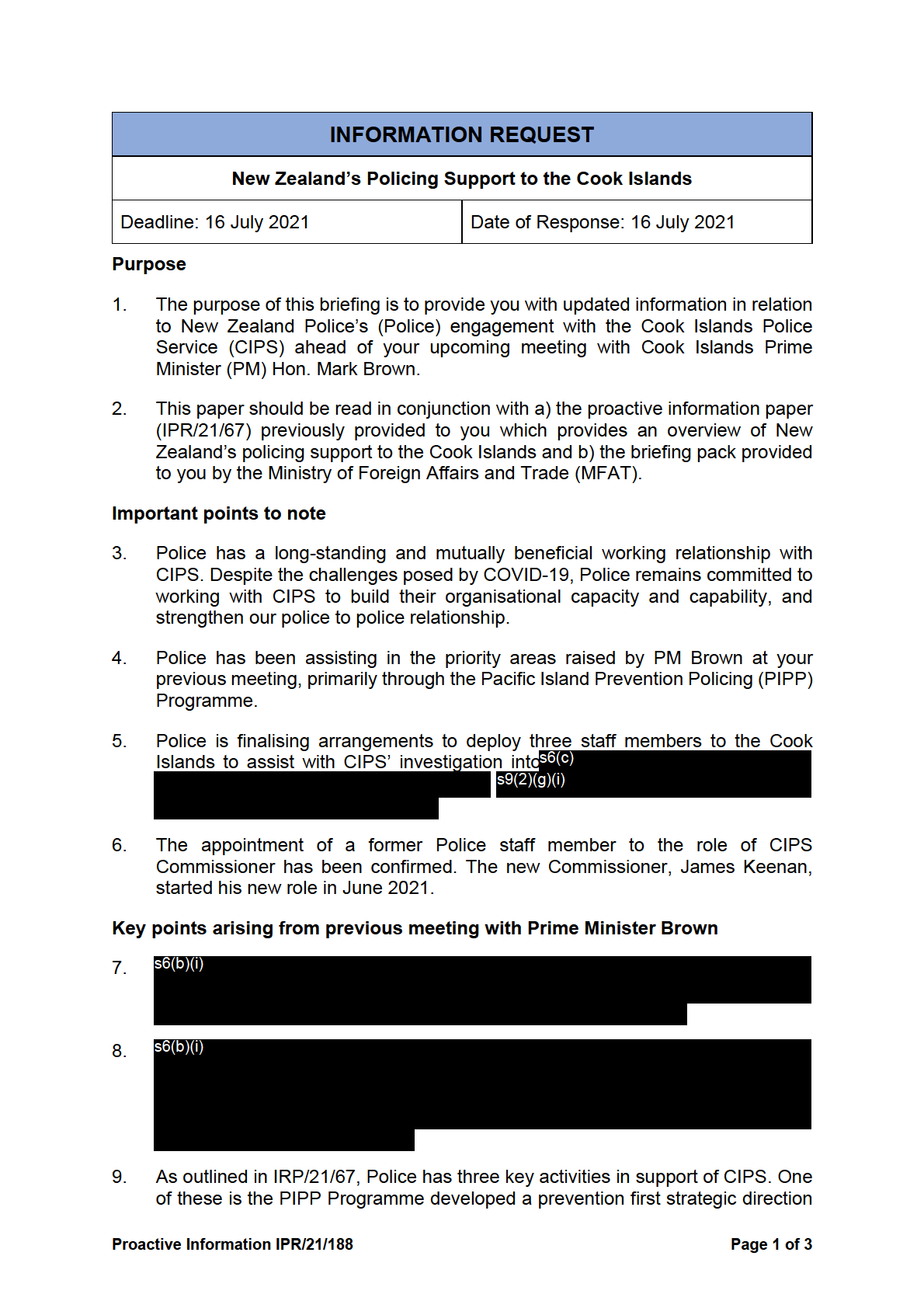

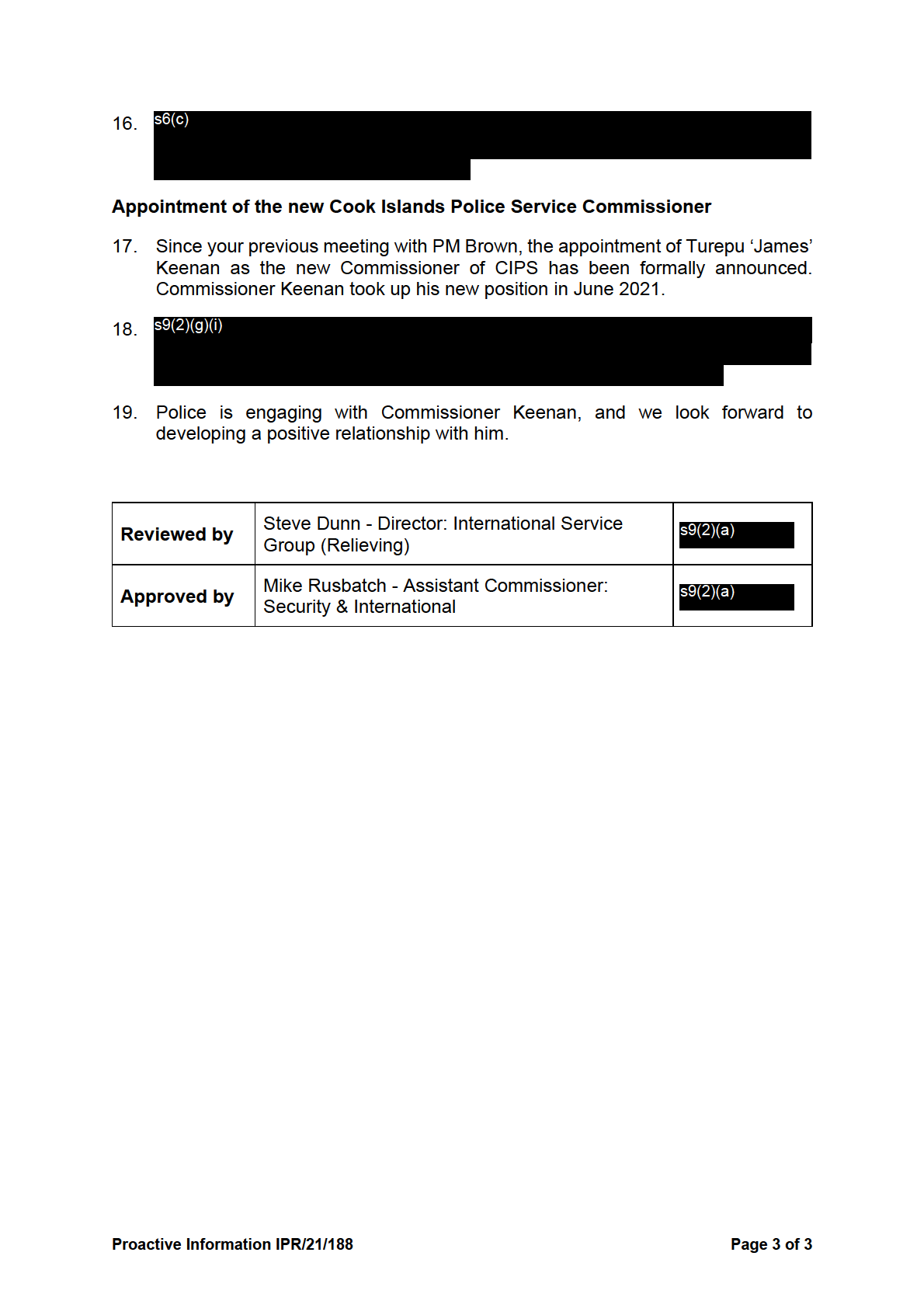

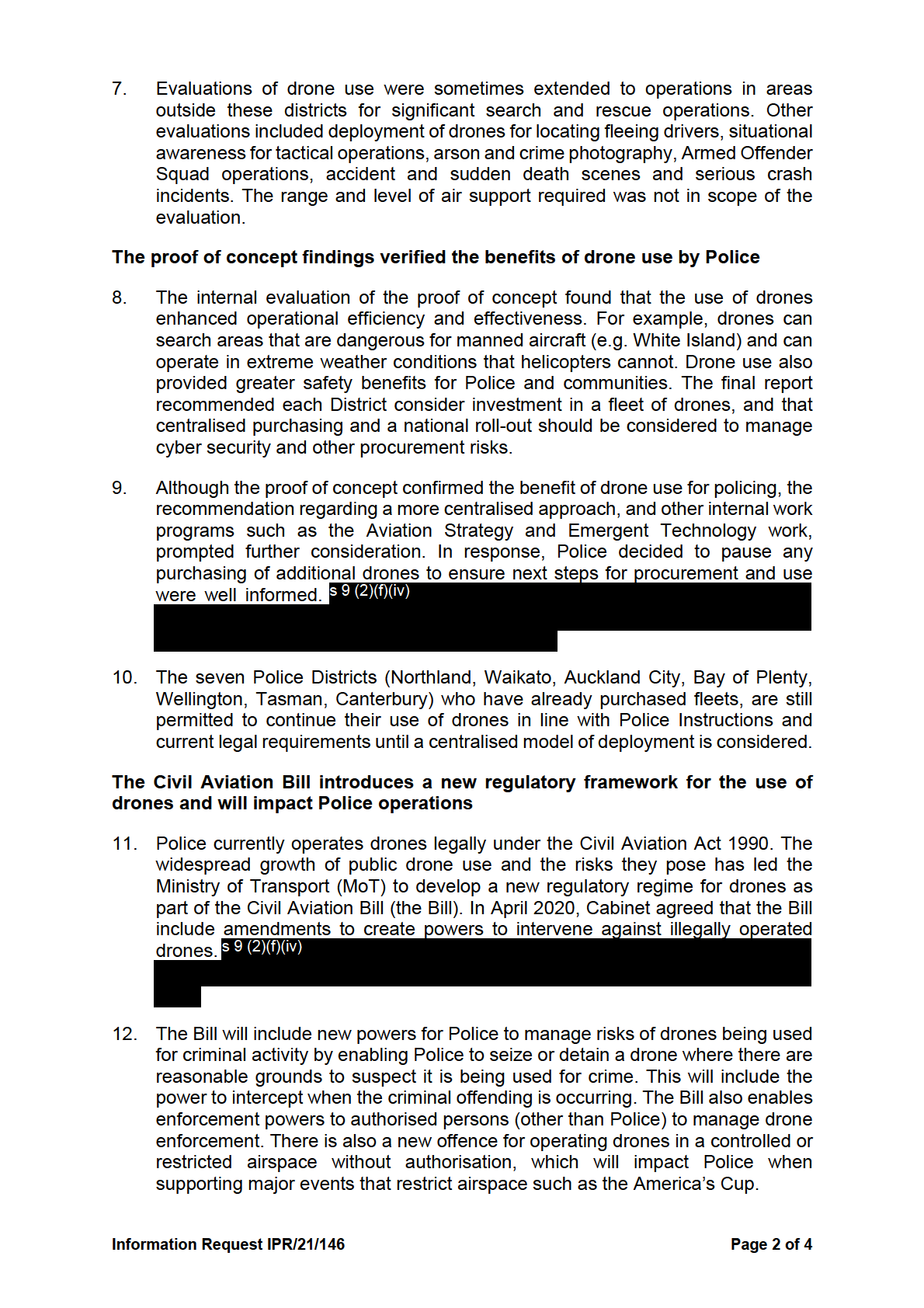

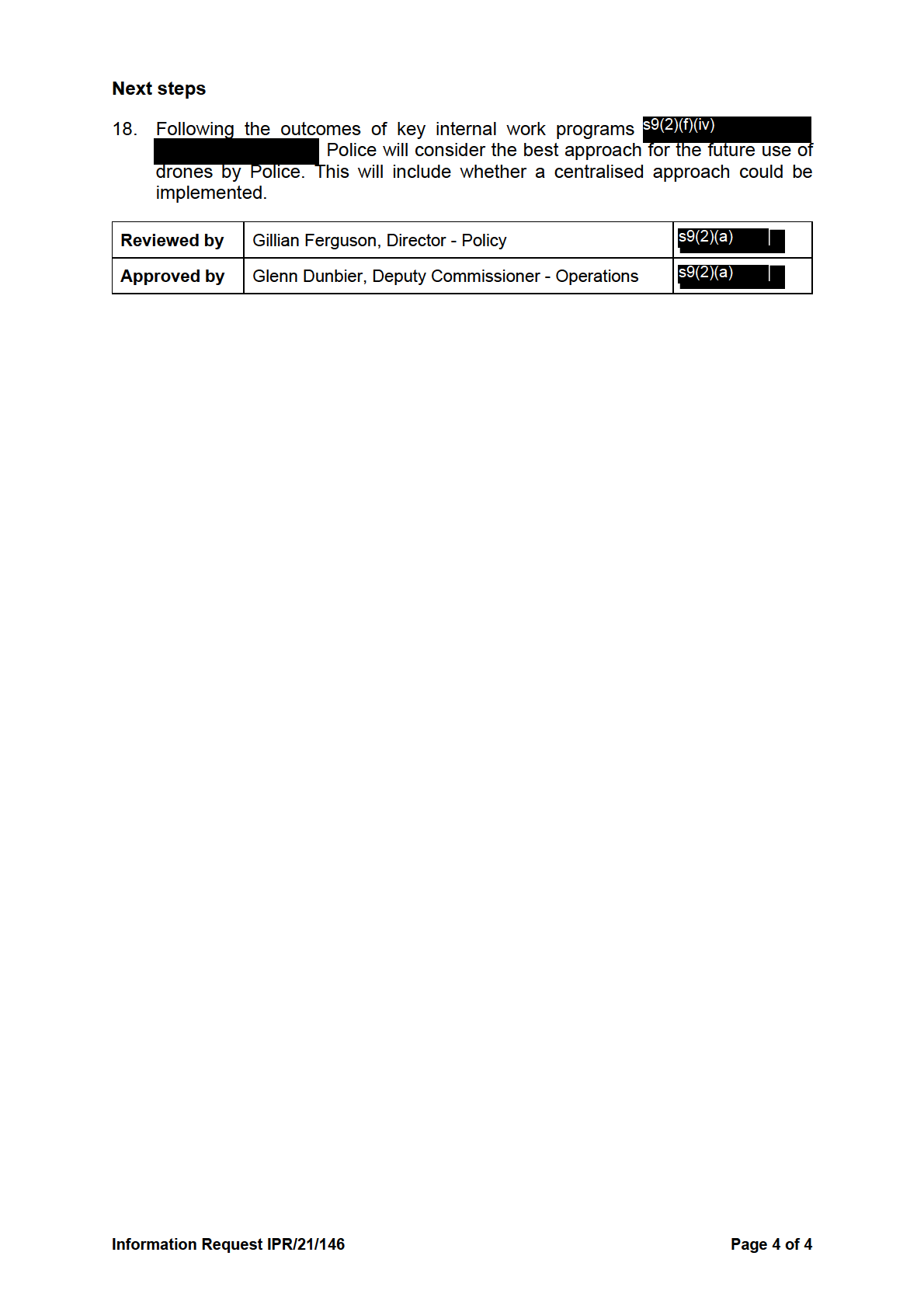
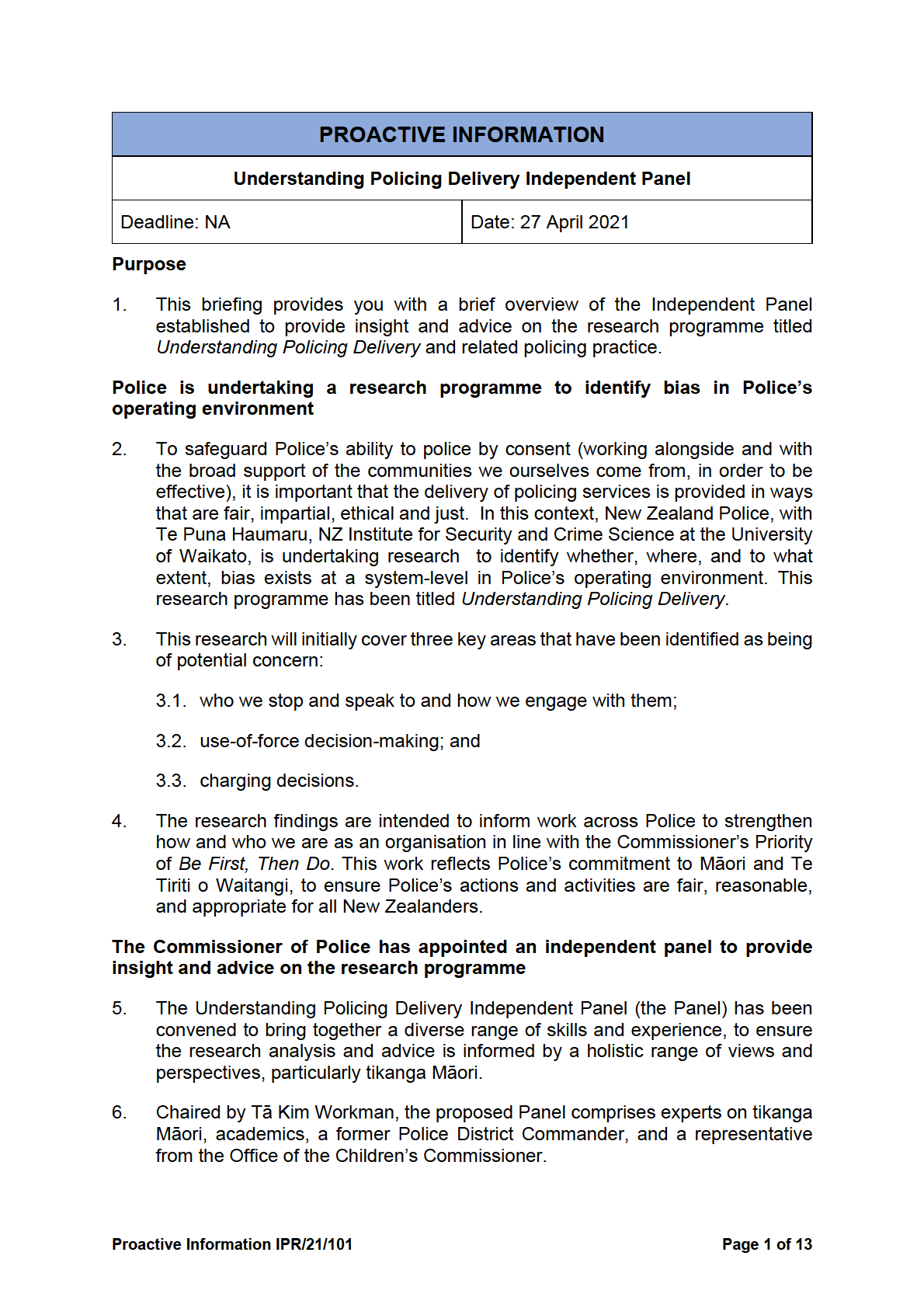
7. A full list of Panel members, along with a brief biography for each, are detailed
in Appendix 1.
Next Steps
8. Panel members have been provided with a draft Terms of Reference which
outlines the Panel’s role, mandate and operating procedures. We expect the
Terms of Reference to be discussed and confirmed by the Panel at their first
meeting, likely to take place in May or June. A copy of the Terms of Reference
has been included in Appendix 2 for your information.
9. Over the coming weeks, Police, along with some members of the Panel and the
University of Waikato, wil meet to discuss the Terms of Reference for the
Research Steering Group, key components of the research programme, as well
as the specific service agreement with the University.
10. We are also developing a wider communications strategy and plan for the
research programme, including a public announcement that wil capture the role,
mandate and membership for both the Steering Group and the Independent
Panel as well as immediate next steps. We expect this announcement to take
place in May.
Reviewed by Bailey Tuiomanufili, Project Manager
s.9(2)(a) OIA
Approved by Mark Evans, DCE Insights and Deployment
s.9(2)(a) OIA
Proactive Information IPR/21/101
Page 2 of 13
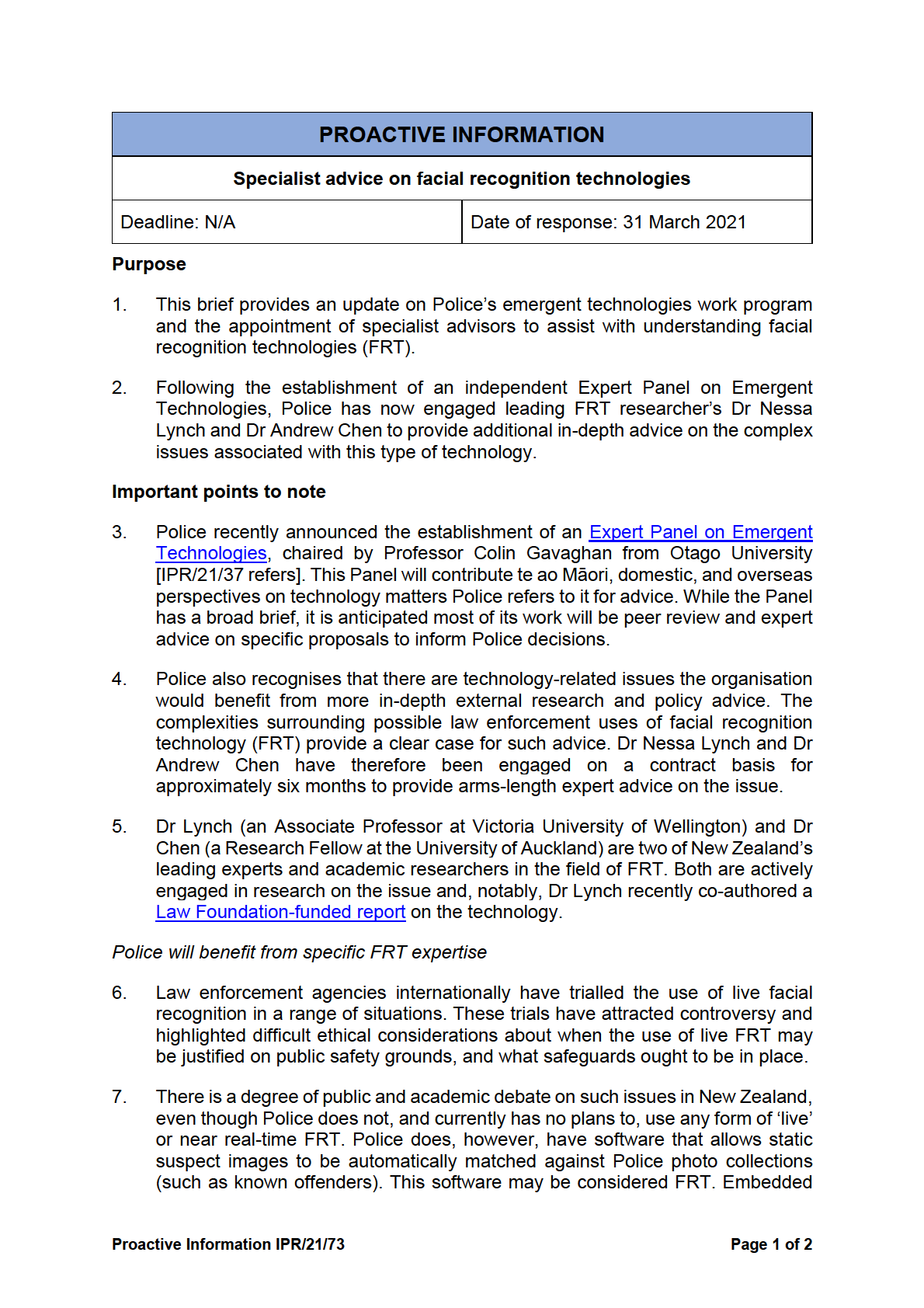
FRT capabilities (of one kind or another) are also becoming more common
across a wide range of technologies that are not necessarily acquired for facial
recognition purposes, which may raise additional complexities for technology
procurement generally.
8. Public debate, and Police’s organisational understanding, would benefit from
being informed by specific expert research examining the issues specifical y from
a New Zealand policing perspective. It is expected the contractors will produce a
paper that clarifies definitions and advises on key ethical, human rights and legal
considerations for current and any possible future uses of FRT in New Zealand.
The advice will include consideration of Māori data sovereignty issues, as well
as implications from a Treaty of Waitangi perspective.
Publicity
9. A media release wil be issued at the appropriate time on this next step in Police’s
strengthened governance and oversight around technology-enabled capabilities.
The Media and Communications group wil send you the release and proposed
timing when it is confirmed.
10. Final advice is currently anticipated to be received towards the end of this year.
Police intends to publish the advice in due course, once it has been considered.
Contributing information
11. Police conducted an
Assurance review of public-facing emergent technologies
in July 2020, and drew upon this initial review work to develop and introduce a
new policy around proposals to test or trial new technologies in September 2020.
12. In addition, Police became a signatory to the
Algorithm Charter for Aotearoa
New Zealand in September 2020.
13. A New Zealand Police Expert Panel on Emergent Technologies has been
established and was publicly announced on 11 March 2021.
Reviewed by Mike Webb, Director: Assurance
s.9(2)(a) OIA
Approved by Mark Evans, DCE: Insights and Deployment
s.9(2)(a) OIA
Proactive Information IPR/21/73
Page 2 of 2
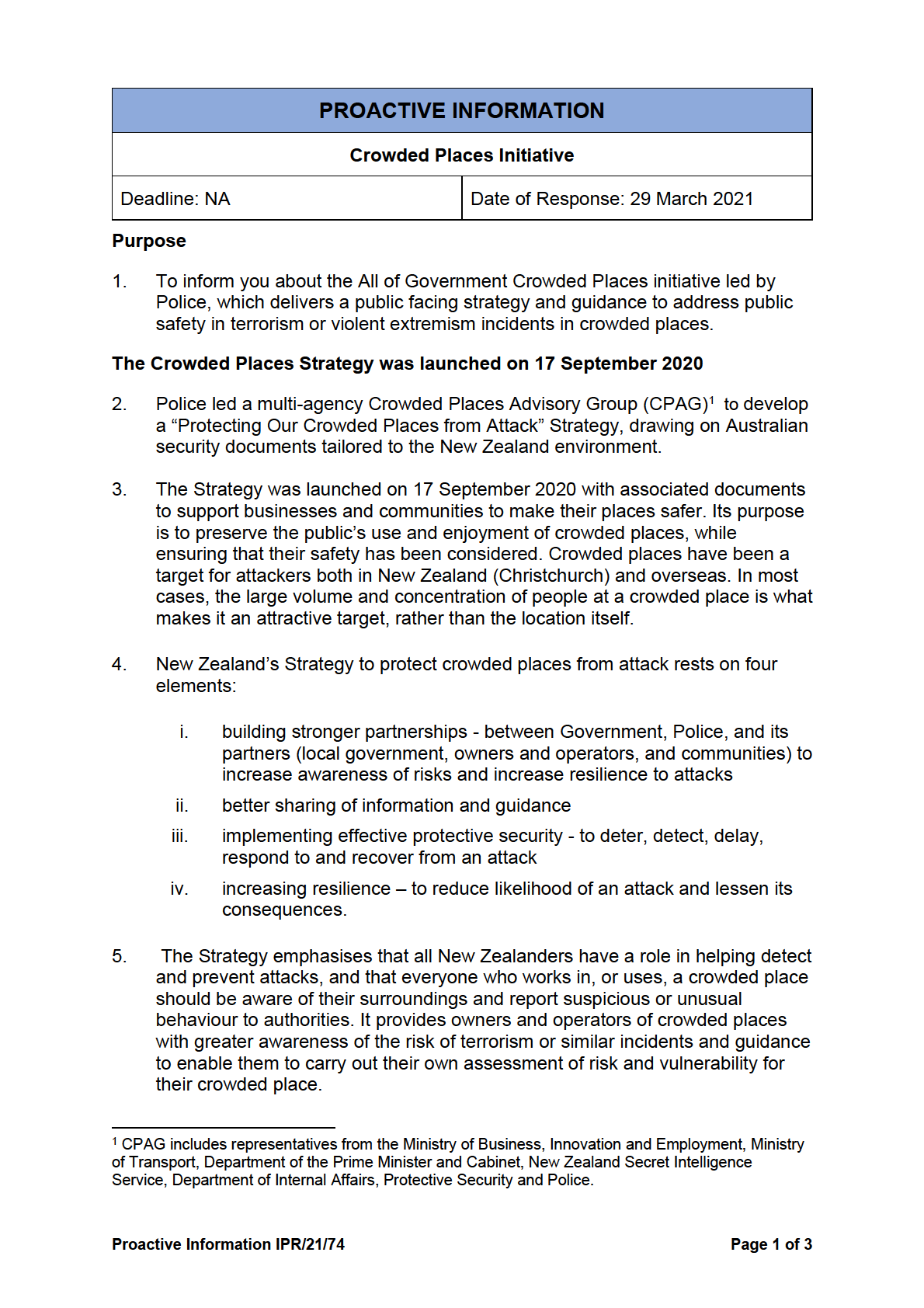
6. The key message to people at public places is Escape. Hide. Tell in the event
they are involved in an attack at a crowded place.
7. The Crowded Places Strategy and supporting documents are available on the
Police website www.police.govt.nz/crowdedplaces. This also includes
ESCAPE. HIDE. TELL. posters in multiple languages.
8. The Crowded Places Strategy is a deliverable of New Zealand’s Countering
Terrorism and Violent Extremism National Strategy.2 The Crowded Places
initiative also aligns with the Royal Commission of Inquiry into the Terrorist
Attack on Christchurch Mosques, to improve New Zealand's counter-terrorism
effort (Part 10, Chapter 2).
Implementation of the Crowded Places Strategy
9. Relevant staf at all Police Districts have been briefed on the Crowded Places
Strategy and supporting documentation in order to be able to respond
effectively to queries from owners and operators.
10. The next phase to establish a Business Advisory Group (BAG) and Community
Advisory Group (CAG) is underway, with an initial launch meeting to engage
with potential advisory group members being held on Wednesday 31 March
2021. Approximately 40 CEOs of large national companies and organisations
have been invited to at end. An original event on 17 February 2021 was
deferred due to COVID level changes.
11. The launch of the BAG and CAG is a key step in engaging owners and
operators with the Crowded Places Strategy and starting to change mindsets to
more proactively ensure New Zealanders are kept safe in their crowded places.
These two groups wil be a key conduit of information to and from their sector to
CPAG.
12. The Strategy and supporting documentation as published provide a baseline of
support for owners and operators to use to protect their crowded place.
13. In addition, Police has a Budget 2021 bid to deliver the capability needed to
support business and community owners and operators as part of the
investment package. This bid has been submitted as part of the DPMC and
Security and Intelligence Board Counter-Terrorism Investments option to
Treasury where it is currently under consideration. The decision on the funding
request is expected by end of April. If approved, a further programme of work
has been defined to promote and enhance the Strategy, to bring wider
awareness of it and promote prevention actions into common practice.
14. Notwithstanding the outcome of the funding bid, CPAG are focussed on
continuity and contingency planning to maintain the CAG and BAG structures
once established.
2 The Countering Terrorism and Violent Extremism National Strategy was launched in February 2020
by the Officials Committee for Domestic and External Security (ODESC) - a committee of Chief
Executives which manages national security in New Zealand.
Proactive Information IPR/21/74
Page 2 of 3
Reviewed by Eric Tibbott, Superintendent, Director –
s.9(2)(a) OIA
Community Partnerships & Prevention
Approved by Chris de Wattignar Assistant Commissioner:
s.9(2)(a) OIA
Iwi & Communities
Proactive Information IPR/21/74
Page 3 of 3
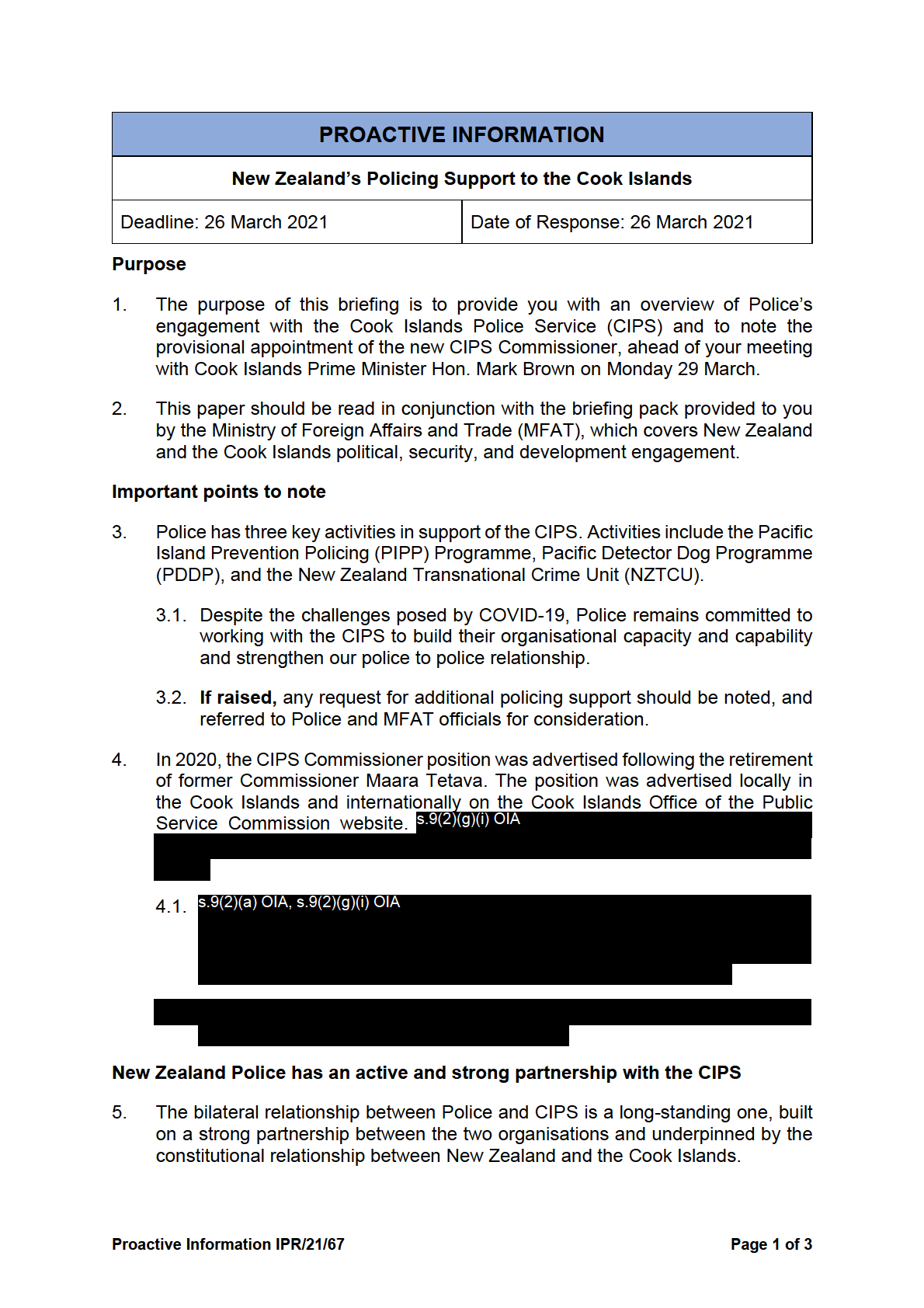
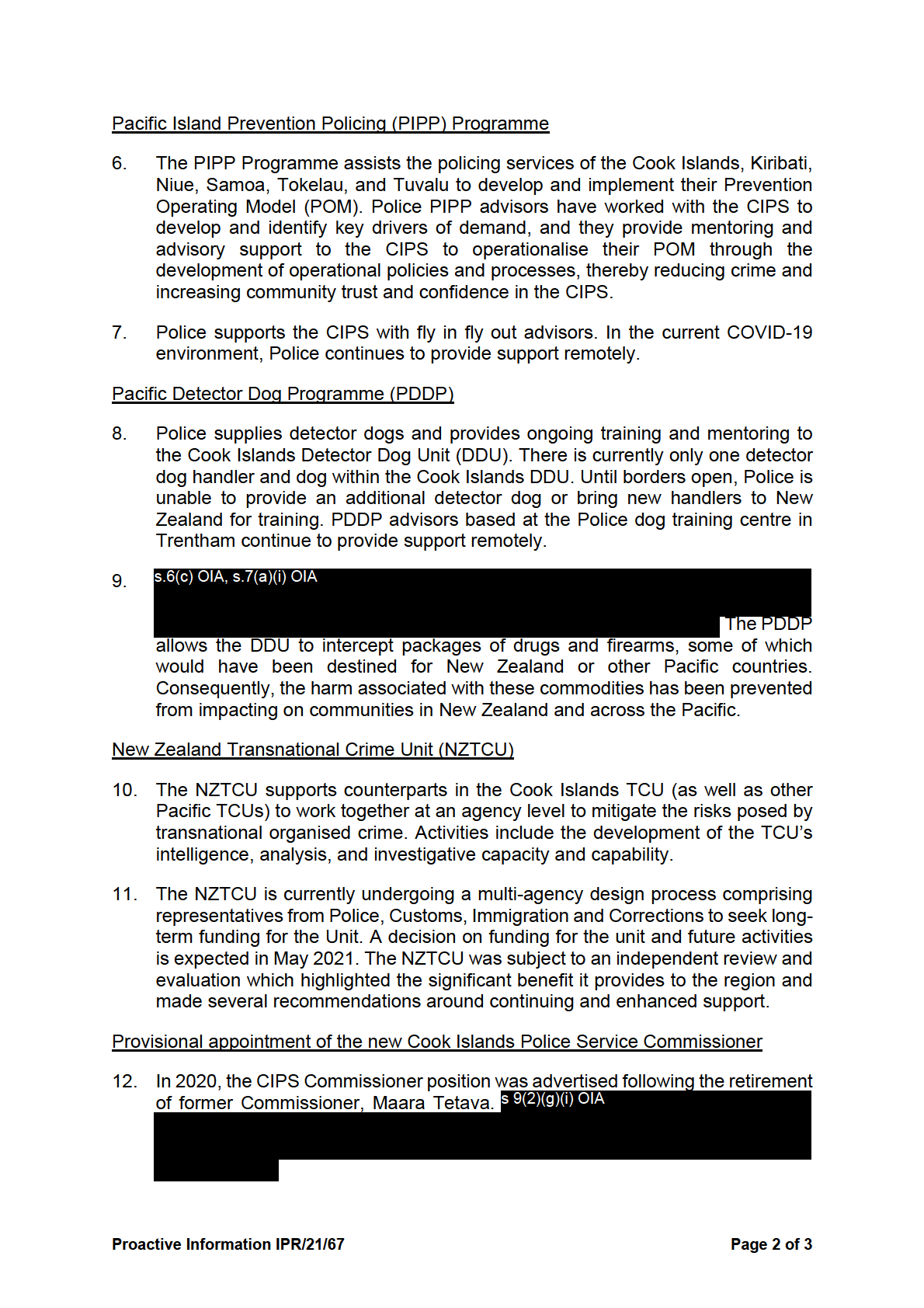
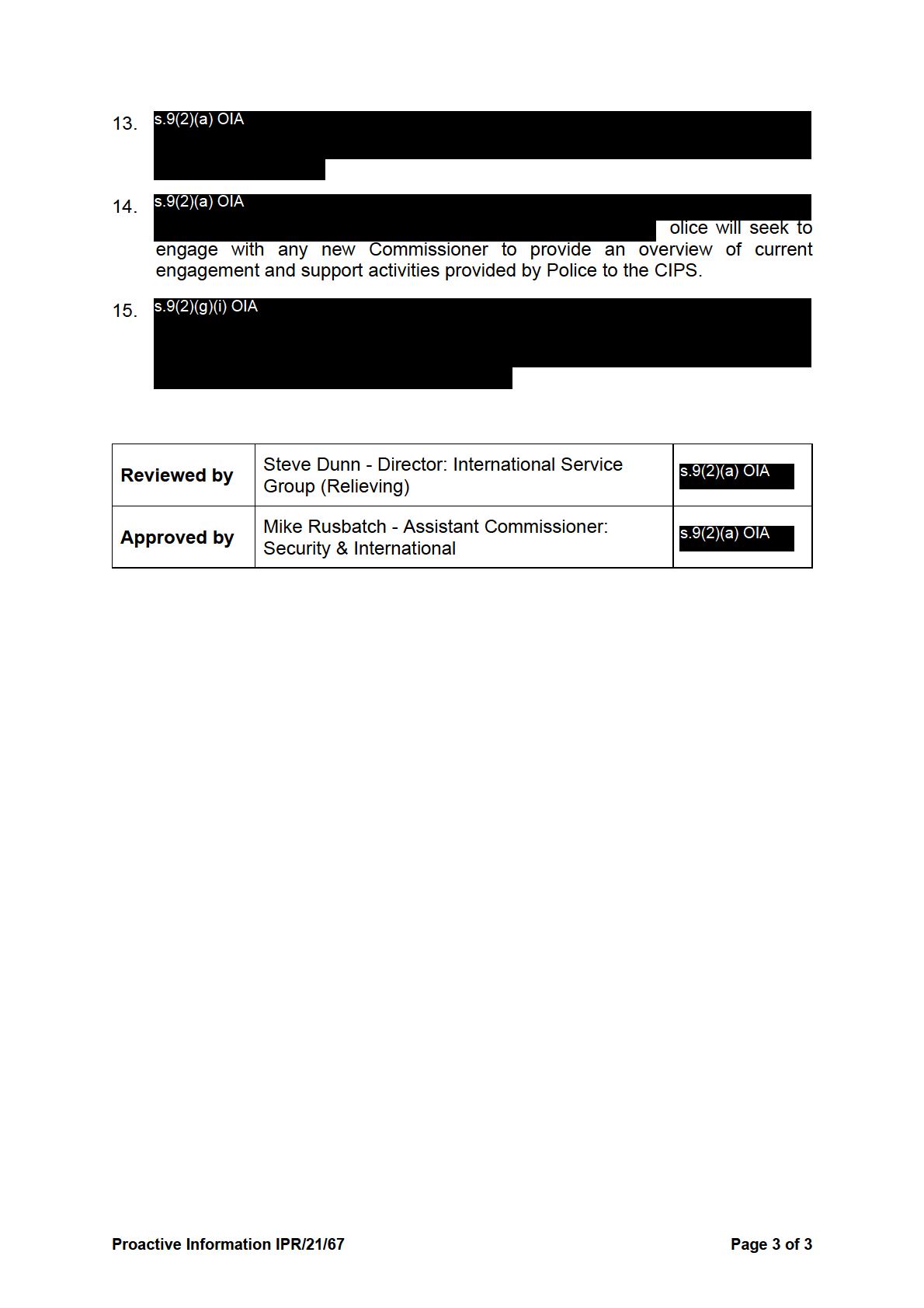

7. The report also makes general and largely positive observations about New
Zealand Police’s use of algorithms; noting, for example, widespread recognition
of the need for proportionality in design, human oversight (including control over
final decisions), and strong awareness of privacy requirements.
8. Taylor Fry’s report offers eight recommendations aimed at ensuring adherence
to international best practice in algorithm development and stewardship. In
summary, these recommend that: Police further revise and strengthen
governance controls; establish centralised life-cycle management processes for
the development, testing, monitoring, and review of algorithms; and establish
best-practice algorithm developer standards, guidance, and associated training.
9. The first referral to the new expert panel (also attached) seeks advice on
implementation of the report’s recommendations. Advice is sought by early April.
Once that advice has been received and used to inform consideration by one of
Police’s Executive governance groups, it wil be published to Police’s website;
along with the Taylor Fry report, and a likely indication of Police’s intentions to
follow-through on the recommendations in the report.
Contributing information
10. Police conducted an
Assurance review of public-facing emergent technologies
in July 2020, and drew upon this initial review work to develop and introduce a
new policy around proposals to test or trial new technologies in September 2020.
11. In addition, Police became a signatory to the
Algorithm Charter for Aotearoa
New Zealand in September 2020.
Reviewed by Mike Webb, Director: Assurance
s.9(2)(a) OIA
Approved by Mark Evans, DCE: Insights and Deployment
s.9(2)(a) OIA
Proactive Information IPR/21/37
Page 2 of 2
















































